guns versus butter model
description: macroeconomic relationship between defense spending and civilian welfare
96 results
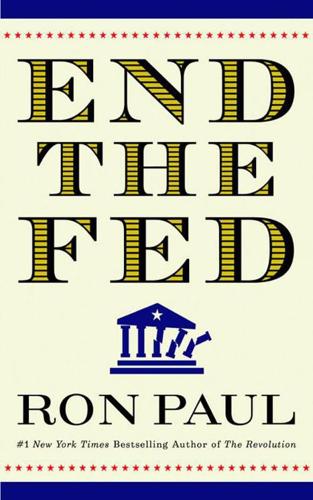
End the Fed
by
Ron Paul
Published 5 Feb 2011
And after every major crisis, whether 9/11, the dot-com disaster of 1999, or the economic meltdown of 2008, the response is more monetary expansion. It was once thought that the government had to choose between providing guns or butter. Now, with the Fed, it is realized that no such choice is ultimately necessary. Politicians get together and agree to logroll so that each special interest is able to get what it wants. Guns, butter, and everything else under the sun, including endless bailouts of failing businesses as well as foreign aid for the world, are all provided courtesy of the money machine. Even when the Fed is not providing direct infusions of newly created money, it stands ready to back endless creations of debt year after year, none of which would be worth anything on the free-market bond market if the Fed were not there to guarantee it all.
…
It’s hard to find, in all of history, when war didn’t create price inflation because, even in ancient times, countries resorted to clipping coins and diluting values or whatever. They inflated the currency because people generally don’t like to pay for the war. And yet, in the seventies, we had consequences of guns and butter. Now, we’re having guns and butter again (we’re having consequences) and it just looks like we may well come to a ’79–’80. Do you anticipate that there is a possibility that we’ll face a crisis of the dollar such as we had in ’79 and 1980? BEN BERNANKE: The Federal Reserve is committed to maintaining low and stable inflation and I’m very confident that we’ll be able to do that.
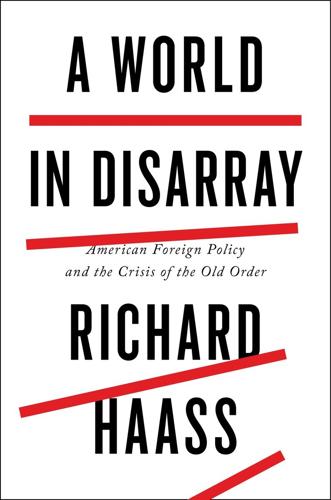
A World in Disarray: American Foreign Policy and the Crisis of the Old Order
by
Richard Haass
Published 10 Jan 2017
But a focus on foreign policy is not enough. National security is a coin with two sides, and what the United States does at home, what is normally thought of as belonging to the domestic realm, is every bit as much a part of national security as foreign policy. It is best to understand the issue as guns and butter rather than guns versus butter. When it comes to the domestic side, the argument is straightforward. In order to lead and compete and act effectively in the world, the United States needs to put its house in order. I have written on what this entails in a book titled Foreign Policy Begins at Home.2 This was sometimes interpreted as suggesting a turn away from foreign policy.
…
Here the emphasis is less on what another country is (or does within its borders) as it is on what it chooses to do beyond its borders, that is, in its foreign policy. There are other foreign policy choices to be made, including the emphasis to be accorded to foreign over domestic policy (this is the classic guns versus butter tension); the matter of how the country should carry out its foreign policy, that is, how much alone (unilaterally) and how much with others (multilaterally); the perennial question about how best to use and blend the various instruments that make up a national security policy; and the issue of how U.S. foreign policy is to be made, which involves more than anything else the balance between the legislative and executive branches of government.
…
This will mean that proportionately fewer resources will be available for national security, including defense, intelligence, homeland security, and foreign assistance. There will as well be fewer dollars available for discretionary domestic programs ranging from education and infrastructure modernization to scientific research and law enforcement. What this portends is an increasingly sharp and destructive debate over guns versus butter while the two fastest-growing parts of the budget, debt service and entitlements, remain largely off-limits. Mounting debt will raise questions around the world about the United States. U.S. inability to deal with its debt challenge will detract from the appeal of the American political and economic model.
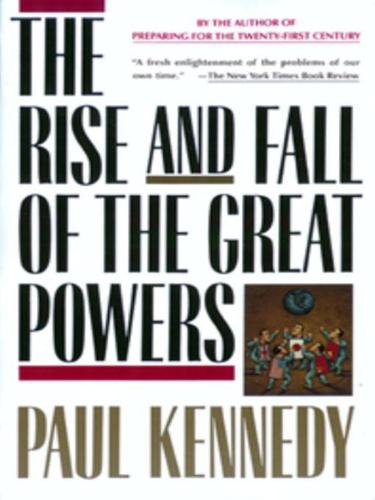
The Rise and Fall of the Great Powers: Economic Change and Military Conflict From 1500 to 2000
by
Paul Kennedy
Published 15 Jan 1989
It was, in the first place, immensely wealthy, both at home and abroad, though the British Treasury felt itself under heavy pressure in the two decades before 1914 as the newer technology more than doubled the price of an individual battleship. Moreover, the increases in the size of the electorate were leading to considerable “social” spending for the first time. Yet if the increases in payments for “guns and butter” looked alarming in absolute terms, this was because the night-watchman state had been taking so little of an individual’s income in taxes, and spending so little of the national income for government purposes. Even in 1913, total central and local government expenditure equaled only 12.3 percent of GNP.
…
Large-scale armaments spending, for its part, can benefit specific industries within the national economy; but it can also lead to a diversion of resources from other groups in society, and it can make that national economy less capable of handling the commercial challenges of other countries. Unless there is an enemy immediately at the gate, high defense spending in this century has nearly always provoked a “guns versus butter” controversy. Less publicly, but of even greater significance for our purposes, it has provoked a debate upon the proper relationship of economic strength to military power.19 Not for the first time in history, therefore, there looms today a tension between a nation’s existence in an anarchic military-political world and its existence in a laissez-faire economic world; between on the one hand its search for strategic security, as represented by its investment in the latest weapon systems and in its large-scale diversion of national resources to the armed forces, and on the other hand its search for economic security, as represented by an enhanced national prosperity, which depends upon growth (which in turn flows from new methods of production and wealth creation), upon increased output, and upon flourishing internal and external demand—all of which may be damaged by excessive spending upon armaments.
…
The feat demanded of most if not all governing bodies as the world heads toward the twenty-first century is therefore a threefold one: simultaneously to provide military security (or some viable alternative security) for its national interests, and to satisfy the socioeconomic needs of its citizenry, and to ensure sustained growth, this last being essential both for the positive purposes of affording the required guns and butter at the present, and for the negative purpose of avoiding a relative economic decline which could hurt the people’s military and economic security in the future. Achieving all three of those feats over a sustained period of time will be a very difficult task, given the uneven pace of technological and commercial change and the unpredictable fluctuations in international politics.
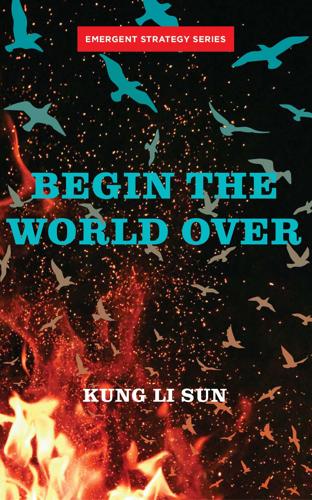
Begin the World Over
by
Kung Li Sun
Published 14 Jun 2022
How else will the revolution spread?” “Guns, of course,” Mary countered. “What is there to spread if you can’t win the first battle?” “Faith, obviously,” Romaine said. “Unless they know they can win, you won’t have anyone to carry that gun.” “Butter,” James suggested, pulling a hot loaf of bread out of the oven. By the time the four agreed ships, guns, faith, and butter were all necessary, it was well past midnight, and the cozy little room behind the kitchen James now called home was, to Denmark, preferable to making his way through dark streets back to Mai’s ship. Another night, James opened an expensive bottle of Burgundy and innocently asked, “If Denmark had a navy, which port city should be its base?”

On Power and Ideology
by
Noam Chomsky
Published 7 Jul 2015
This was followed by civil war and bombardment at an incredible scale, with hundreds of thousands killed and the country virtually destroyed. Meanwhile, a popular movement against the Indochina wars began to develop at home, reaching significant proportions by 1967. The major achievement of the peace movement was to prevent the government from carrying out a full-scale national mobilization. It was forced to fight a “guns-and-butter war,” with deficit financing, harming the U.S. economy and laying the basis for the crisis of following years. As a result, U.S. power declined relative to its real rivals, Europe and Japan, the latter now becoming a serious competitor thanks to the costs of the Vietnam war, harmful to the United States but highly beneficial to Japan, which enriched itself by its participation in the destruction of Indochina, as did Canada and other U.S. allies.
…
A mass popular movement developed, spontaneously, without organization or centralized leadership, taking many forms, and in an atmosphere of extreme hostility on the part of the media and articulate opinion in general. As I described in the second lecture, it reached such a scale that the government was unable to undertake a true national mobilization, as during World War II, but was compelled to fight a “guns-and-butter” war. But the scale of the attack was such that this led to serious consequences for the U.S. economy, which began to decline relative to its real rivals: Europe and Japan. Furthermore, the U.S. army, much to its credit, began to collapse from within, reflecting the dissidence within the domestic society.

An Extraordinary Time: The End of the Postwar Boom and the Return of the Ordinary Economy
by
Marc Levinson
Published 31 Jul 2016
Burns dreamed of becoming secretary of the Treasury, but in October 1969 he was offered a job that would prove far more consequential. Nixon named Burns chairman of the Federal Reserve Board of Governors. Burns was the first professional economist ever to take the helm of the central bank. His expertise in business cycles was sorely needed. In the mid-1960s, Nixon’s predecessor, Lyndon Johnson, had offered America “guns and butter,” building up military forces in Vietnam without raising taxes or curtailing social programs. The Fed had loyally supported Johnson’s policies by making sure that short-term interest rates stayed low so that the government could borrow cheaply to fund the war. In the short term, this mix of policies had ensured jobs for almost everyone and rapidly rising wages.
…
See gross national product González, Felipe, 211, 212–213, 213–214 Goodhart, Charles, 180 Gordon, Robert, 263–264 government: inability to control economic outcomes, 9, 261–262; role in economy, 24 government debt: ratio of, to national income, 151 government spending, 229–230, 237; Thatcher and, 189, 196 Great Britain, 16, 19, 65, 66, 124; anti-inflation policy in, 53; anti-tax movement in, 151–154; bank loans to Third World and, 242; banks/banking system in, 37 (see also Bank of England; banks/banking systems; Israel–British Bank of Tel Aviv); budget deficits in, 182, 184; conservative economic policy in (see under Thatcher, Margaret); debt crisis in, 248; deregulation in, 114; economic crisis of 1970s in, 167–172; environmentalism in, 62; income distribution in, 139; income tax in, 149, 150; inflation in, 167, 168, 169, 170, 171, 172; labor share in, 141; labor/trade unions in, 169–171; manufacturing in, 167, 168, 169, 170; nationalism in, 267; oil crisis of 1973 in, 72, 74–75, 77, 167; political parties in, 167–172, 182, 184–191, 194, 260; pollution and, 59–60; population growth in, 61–62; postwar economic boom in, 20–21, 268–269; postwar productivity in, 22; productivity bust in, 258–259; tax rate in, 137; ungovernability in, 156, 158; wartime tax burden in, 146, 147; welfare state in, 18, 144, 145. See also Thatcher, Margaret Great Depression of 1930s, 7 Great Migration (African American), 21 Greece, 19, 81; postwar economic boom in, 20 Greenspan, Alan, 65 Griliches, Zvi, 9–10 gross national product (GNP), 134 Guardian, 65 “guns and butter” model, 48–49 Hagen, Carl, 154 Haldeman, H. R., 55 Heath, Edward, 82, 154, 167–168, 171, 172, 175, 182 Heimann, John, 97 Heller, Walter, 26, 27, 35, 58, 261 Herstatt, Iwan, 89, 92 Hitler, Adolf, 27, 102 Hong Kong, 255 Howe, Sir Geoffrey, 183, 184–185, 190 Hungary, 160–161; nationalism in, 267 Iceland, 148 IMF.
…
Henry Schroder & Co., 82 Jamaica, 244 Japan, 63, 66–67, 81, 115–129, 163, 164, 233; administrative management in, 178; anti-inflation campaign in, 118–119; automobile industry in, 122–123; bank loans to Third World and, 241, 242; banks/banking system in, 94 (see also Bank of Japan; banks/banking systems); budget deficits in, 150; debt crisis in, 247, 251; decline of old economy of cheap labor and energy in, 118, 121–122; deregulation in, 113; economic crisis of 1990s in, 270; economic growth in, contributors to, 116–117; economic inefficiency in, 117; economic planning in, 25, 117, 123; economic slowdown in, 3–4; economic stagnation in, 261; economy at close of World War II in, 17, 18, 19; education in, 145; environmentalism in, 62; income distribution in, 140; income per person in, 6, 116; income tax in, 147, 149, 164; inflation and buying power in, 56; inflation in, 164; knowledge economy in, 123; labor productivity in, 257; labor share in, 141–142; manufacturing and trade in, 11, 116, 118, 119, 123, 124–129, 131, 137, 261; Ministry of International Trade and Industry, 25, 116, 117, 118, 120, 121, 123, 125, 129; modernization in, 117; new economy of engineering and design in, 122; oil crisis of 1973 in, 2–3, 72, 74, 77–78, 115–119, 122–124, 240; oil crisis of 1970s in, 177–178; operation scale-down in, 118; political parties in, 178; postwar economic boom in, 20; postwar productivity in, 23, 24; privatization in, 215–216; productivity bust in, 259, 268; productivity growth in, 263; productivity slowdown in, 265; service sector in, 117, 123–124; textile/apparel sector in, 119–120; trade with United States and, 119–120; unemployment scheme in, 121; ungovernability in, 156–160; US trade sanctions against, 128–129; wage, training, and job seeking subsidies in, 121; welfare state in, 18, 145 jawboning, 76–77 Jenkins, Peter, 150, 169 John Paul II, 219 Johnson, Lyndon, 145, 162; “guns and butter” model and, 48–49 Johnson administration, 222 Jones, Jack, 169 Jordan, 69 Joseph, Sir Keith, 176; free-market economics and, 172, 260 Kahn, Alfred, 112 Kaufman, Henry, 66, 232 Kennedy, Edward, 112 Kennedy, John F., 26, 144–145; inflation and, 261; unemployment and, 261 Kennedy administration, 222 Kenya, 44 Keynes, John Maynard, 31 Kiesinger, Kurt Georg, 33 Kissinger, Henry, 70 Klasen, Karl, 55 Kleinwort Benson, 84 knowledge economy, 123 Kohl, Helmut, 10, 177, 213 Korea, 242, 265 Korean Peninsula, 44 Korean War, 4, 20, 122 Krauss, Ellis, 177 Krippner, Greta, 236 Kuczynski, Pedro Pablo, 255 Kuwait, 70 Kuznets, Simon, 133–136; gross national product and, 134; stages of economic growth and, 134–135 Kuznets curve, 134–135 labor productivity, 257–258.
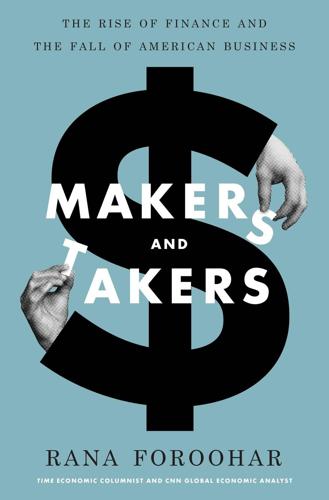
Makers and Takers: The Rise of Finance and the Fall of American Business
by
Rana Foroohar
Published 16 May 2016
Greta Krippner, the University of Michigan scholar who has written one of the most comprehensive books on financialization,62 believes this was the case in the run-up to the 1980s, when financialization began its fastest growth—a period often called the “age of greed.”63 According to Krippner, that shift, which would come to encompass Reagan-era deregulation, the unleashing of Wall Street, the rise of the ownership society, and the launch of the 401(k) system, actually began in the late 1960s and early 1970s. It was during that period that the growth that America had enjoyed following World War II began to slow, inflation began to rise, and government was forced to confront the challenge of how to allocate resources that were becoming more scarce (the “guns versus butter” debate). Rather than make the tough decisions themselves, politicians decided to pass the buck to finance under the guise of a “markets know best” approach. Little by little, from the 1970s onward, the Depression-era regulation that had served America so well was rolled back, and finance grew to become the dominant force that it is today.
…
HOW THE BARBARIANS STOLE OUR STIMULUS As I describe in chapters 1 and 10, Washington not only resists this debate, but also often actively encourages the development of finance (pushing more consumer debt and credit) as a way to avoid it. Just as the deregulation and financialization that began in the late 1970s were in part a tactic to avoid a “guns versus butter” discussion about allocating national resources, the Fed’s $4.5 trillion money dump following the 2008 financial crisis (which threw a wet blanket over the Great Recession) was a way for politicians to avoid a real discussion about a growth model that enriches Wall Street but not Main Street.
…
The decades between the 1933 Glass-Steagall regulation and the late 1970s were exceptionally healthy ones, a time during which banks were seen as facilitators of the real economy, not the main event. By and large, government decisions around finance taken during that period reflected that (plus there simply weren’t as many financial crises to deal with, given that the industry was smaller and more constrained). But thanks to the “guns versus butter” pressure around how to allocate resources in an economy that began to grow more slowly from the 1970s onward, new dysfunctional alliances between Washington and Wall Street emerged. As outlined in chapter 1, banks and activists both pushed the government to deregulate interest rates. Politicians tried to pass the buck on financial decision making back to Wall Street rather than make difficult choices about resource allocation in society.
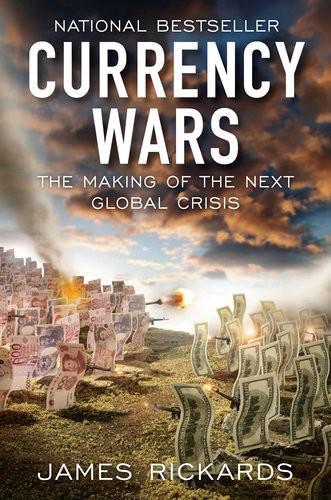
Currency Wars: The Making of the Next Gobal Crisis
by
James Rickards
Published 10 Nov 2011
Although conceived in the form of a grand international agreement, the Bretton Woods structure was dictated almost single-handedly by the United States at a time when U.S. military and economic power, relative to the rest of the world, was at a height not seen again until the fall of the Soviet Union in 1991. Despite the persistence of Bretton Woods into the 1970s, the seeds of Currency War II were sown in the mid- to late 1960s. One can date the beginning of CWII from 1967, while its antecedents lie in the 1964 landslide election of Lyndon B. Johnson and his “guns and butter” platform. The guns referred to the war in Vietnam and the butter referred to the Great Society social programs, including the war on poverty. Although the United States had maintained a military presence in Vietnam since 1950, the first large-scale combat troop deployments took place in 1965, escalating the costs of the war effort.
…
This convergence of the costs of escalation in Vietnam and the Great Society in early 1965 marked the real turning away from America’s successful postwar economic policies. However, it would take several years for those costs to become apparent. America had built up a reservoir of economic strength at home and political goodwill abroad and that reservoir now slowly began to be drained. At first, it seemed that the United States could afford both guns and butter. The Kennedy tax cuts, signed by President Johnson shortly after President John F. Kennedy’s assassination in 1963, had given a boost to the economy. Gross domestic product rose over 5 percent in the first year of the tax cuts and growth averaged over 4.8 percent annually during the Kennedy-Johnson years.
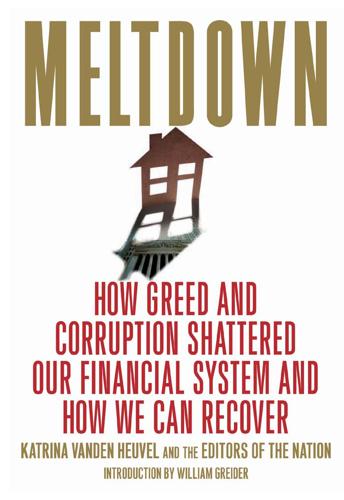
Meltdown: How Greed and Corruption Shattered Our Financial System and How We Can Recover
by
Katrina Vanden Heuvel
and
William Greider
Published 9 Jan 2009
Floating exchange rates were volatile, but instruments like markets in future exchange rates emerged to manage new risks. There might be serious ruptures, like the 1980s Latin American debt crisis or the 1990s Asian financial crisis when private markets took fright, but basically governments could step away from global economic management. The U.S. could have guns, butter and allow its great multinationals and banks to expand abroad willy-nilly—and the markets would manage the implications spontaneously, finding the capital the U.S. needed with no constraint on either its government or financial system. Now we know they cannot. The crises of trust and out-of-control speculation that wrecked Latin America and Asia has now attacked the system’s core in the U.S. and Europe.
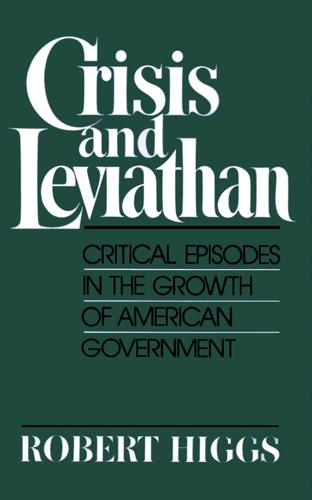
Crisis and Leviathan: Critical Episodes in the Growth of American Government
by
Robert Higgs
and
Arthur A. Ekirch, Jr.
Published 15 Jan 1987
From "Cassandra" in The Selected Poetry of Robinson feffers, by Robinson Jeffers, copyright 1965 by Alfred A. Knopf, Inc., and Random House, Inc. Reprinted by permission of the publisher. From "Siren Song" by Margaret Atwood. Reprinted by permission of Margaret Atwood from You Are Happy, published by Harper & Row, copyright 1974. From "Guns Before Butter" by BenoIt Brecht, copyright 1976 by Eyre Methuen, Ltd. Reprinted from Bertolt Brecht Poems, 1913-1956 by permission of the publisher, Methuen, Inc., by arrangement with Suhrkamp Verlag, Frankfurt. 2 4 6 8 10 9 7 5 3 1 Printed in the United States of America For KSCH If the gods grant me leave, I'll come back as a gull over Grayland, To soar above that sunlit shore where we walked in the wind and my searching soul Found a harbor not marked on the map.
…
Such a characterization fails even to approximate the truth. In fact, various "wars" raged within the war: farmers against nonfarmers, small businessmen against big businessmen, labor unionists against employers and the rest of the public, and so forth. In short, the usual politicoeconomic conflicts continued. Moreover, the issue of guns versus butter intruded on everybody. Wilson had declared during World War I that '_'politics is adjourned," and FOR insisted during World War II that Dr. Win-TheWar had replaced Dr. New Deal and "politics is out"; but all reports of the death of politics were mistaken. Only where truly overriding national security issues arose did the usual political conflicts abate.
…
Frankfurter to Walter Lippmann, April 12, 1932, as quoted in Larry G. Gerber, The Limits of Liberalism: Josephus Daniels, Henry Stimson, Bernard Baruch, Donald Richberg, Felix Frankfurter and the Development of the Modern American Political Economy (New York: New York University Press, 1983), pp. 267-268. 15. Bertolt Brecht, "Guns Before Butter," 1939. 16. Richard D. Auster and Morris Silver, The State as a Firm: Economic Forces in Political Development (Boston: Martinus Nijhoff, 1979), pp. 57-62. John W. Eley speaks of "mobilization within a national mobilization," that is, "concerted efforts by affected groups to marshall their political and economic resources in order to prevent or reduce negative consequences from governmental policies."

The State and the Stork: The Population Debate and Policy Making in US History
by
Derek S. Hoff
Published 30 May 2012
“Letter to the President of the Senate and to the Speaker of the House on Revision of the Immigration Laws,” July 23, 1963, ibid., 594–97. 156. Daniels, Guarding the Golden Door, 131–32. 157. Public Papers of Lyndon B. Johnson, 1963–64, 116. 158. For Feighan’s role, see Bernstein, Guns or Butter, 253–55. For the feud between Feighan and Celler, see Reimers, Still the Golden Door, 65. 159. For Gallup polls, see Graham, Collision Course, 60. notes to chapter five 313 160. Daniels, Guarding the Golden Door, 133. 161. Reimers, Still the Golden Door, 69–71. 162. Quoted in Bernstein, Guns or Butter, 257. 163. For example, Graham, Collision Course, mentions the population issue only once, when discussing Sen. Ervin (62). 164. Bon Tempo, Americans at the Gate, 89. 165.
…
White, The Making of the President, 1960 (New York: Atheneum, 1961), 106. 25. Historians have not ignored youth unemployment. For example, Irving Bernstein notes the Labor Department’s apprehension about youth employment and cites Secretary of Labor Wirtz’s concern that “the baby boom is just now rolling into the workforce” (Guns or Butter: The Presidency of Lyndon Johnson [New York: Oxford University Press, 1996], 103). But these occasional references do not capture the widespread trepidation that the Baby Boom posed a serious macroeconomic challenge. Historians primarily discuss the youth unemployment issue in terms of anxiety about the juvenile delinquent (Sundquist, Politics and Policy, 73); the ghetto (Carl Solberg, Hubert Humphrey: A Biography [1984; reprint, St.
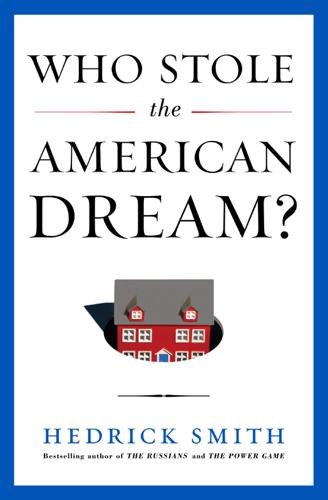
Who Stole the American Dream?
by
Hedrick Smith
Published 10 Sep 2012
… We Cannot Do Both” Matthew Hoh had put his finger on what the Bush administration ignored and the Obama administration played down—the impact of the Afghan and Iraqi wars on the U.S. economy and the toll they were taking on domestic programs for average Americans. President Bush sidestepped a guns-vs.-butter debate by never raising taxes to pay for the wars in Iraq and Afghanistan or for America’s global war against al-Qaeda. The wars have added more than $2 trillion to the U.S. national debt. In Matthew Hoh’s terms, Bush mortgaged the nation’s economy for years to come. Not until the tenth year of the Afghan war, when domestic programs faced severe cutbacks as Congress grappled with the national debt, was there a public clamor for cutting military spending.
…
During the Senate’s partisan wrangling over the debt ceiling, West Virginia Democrat Joe Manchin III remonstrated: “We can no longer, in good conscience, cut services and programs at home, raise taxes or—and this is very important—lift the debt ceiling in order to fund nation-building in Afghanistan. The question the president faces—we all face—is quite simple: Will we choose to rebuild America or Afghanistan? In light of our nation’s fiscal peril, we cannot do both.” War Costs Will Total $4 Trillion What had pushed the guns-vs.-butter debate to the front burner was uneasiness at the staggering costs of the wars in Iraq and Afghanistan and a growing awareness that they were fueling the national debt because they had not been paid for. Congress has directly appropriated $1.4 trillion in funds earmarked for the wars in Iraq and Afghanistan from September 11, 2001, through 2012, but those figures vastly understate the total costs.
…
Eisenhower, who is remembered for his parting admonition about the excessive political power of the military-industrial complex, had worried earlier in his presidency that the United States was becoming so obsessed with the Soviet threat and its urge to build a network of overseas bases that it risked undermining the nation’s long-term economic security. As Eisenhower put it: “To amass military power without regard to our economic capacity would be to defend ourselves against one kind of disaster by inviting another.” Eisenhower was explicit about the trade-offs between guns and butter. Making one heavy bomber, he said, meant sacrificing thirty modern schools or two fully equipped hospitals or two electric power plants. “We pay for a single destroyer with new homes that could have housed more than 8,000 people …,” he said. “This is not a way of life at all, in any true sense.

Polaroids From the Dead
by
Douglas Coupland
Published 1 Jan 1996
Early family memory: Young Douglas cutting up Life magazines bought for twenty-five cents apiece at a local secondhand book store and pasting fragments of pictures together—making “Rosenquists” while annoying his brothers, baffling his parents. Ahhh…a vision of postmodernism. We emerge from our mother’s womb an unformatted diskette: our culture formats us. The best Life magazine years for Rosenquist-style montages were from about 1948 to 1962. That’s when the imagery was at its most generic—its Sears Roebuck-iest—when guns and butter were roaring ahead full blast. In 1955 it was not an issue for Hormel or Van Kamp’s to spend X-thousand dollars to show a full-page photo of ham. I remember bowls of Campbell’s vegetable soup; beach balls; astronauts; swing sets; wood-paneled station wagons. Yet even by 1970 it all seemed somewhat extreme.
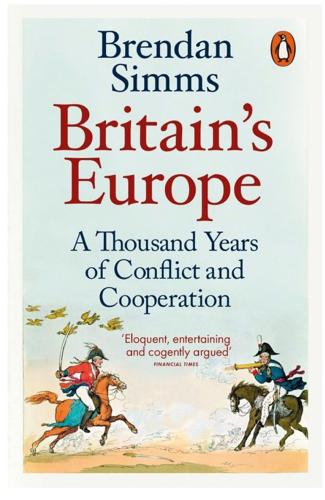
Britain's Europe: A Thousand Years of Conflict and Cooperation
by
Brendan Simms
Published 27 Apr 2016
This was seen as an alternative to conscription and ‘militarism’, and was intended to stiffen the moral and physical sinews of the nation against Germany.91 At the same time, the Liberal government sought to reconcile the working classes to the state through a programme of social and welfare reform, for instance through the introduction of health insurance and pensions. The trouble was that, while the policy of strength abroad and justice at home was complementary in conceptual terms, it was contradictory from the fiscal point of view. Budget hawks demanded to know what it would be: ‘Dreadnoughts or old-age pensions’,92 guns or butter? Matters came to a head in 1909, when intelligence reports suggesting that the Germans were pulling ahead in naval construction were made public; these were aggravated by wild rumours that German spies were staking out East Anglia and the south coast.93 In response, the government set up the Secret Service Bureau (which later divided into MI5 and MI6) specifically to deal with German penetration.94 Two elections in 1910 showed Liberals and Conservatives to be neck and neck.
…
‘With relatively few assets and large debts,’ Thorneycroft warned prime minister Macmillan at the end of the year, ‘we continue to live upon the scale of a great power. We have the most expensive defence forces in Europe. We have joined the nuclear “club”. We claim at the same time a very high standard of life. We seek to lead the world in the social services we provide.’48 It would have to be either guns or butter. Britain chose butter. The population was appeased with throwaway budgets: Macmillan told them in 1957 that they had ‘never had it so good’. The United Kingdom had become primarily a ‘welfare’ rather than a ‘warfare’ state, though she still maintained considerable military capabilities. The price was paid in terms of Britain’s European standing.
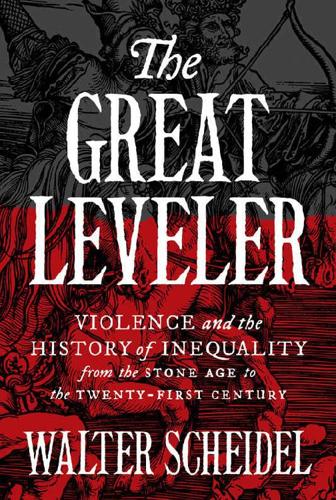
The Great Leveler: Violence and the History of Inequality From the Stone Age to the Twenty-First Century
by
Walter Scheidel
Published 17 Jan 2017
“Top incomes in Norway.” In Atkinson and Piketty, eds. 2010: 448–481. Abdullah, Abdul Jabbar, Doucouliagos, Hristos, and Manning, Elizabeth. 2015. “Is there a Kuznets process in Southeast Asia?” Singapore Economic Review 60. doi:10.1142/S0217590815500174. Abelshauser, Werner. 1998. “Germany: guns, butter, and economic miracles.” In Harrison, ed. 1998b: 122–176. Abelshauser, Werner. 2011. Deutsche Wirtschaftsgeschichte: von 1945 bis zur Gegenwart. 2nd ed. Munich: C. H. Beck. Abul-Magd, Adel Y. 2002. “Wealth distribution in an ancient Egyptian society.” Physical Review E 66: 057104, 1–3. Acemoglu, Daron, and Autor, David. 2012.
…
The rise and fall of classical Greece. Princeton, NJ: Princeton University Press. Ober, Josiah. 2015b. “Classical Athens.” In Monson and Scheidel, eds. 2015: 492–522. Ober, Josiah. 2016. “Inequality in late-classical democratic Athens: evidence and models.” Working paper. Obinger, Herbert, and Schmitt, Carina. 2011. “Guns and butter? Regime competition and the welfare state during the Cold War.” World Politics 63: 246–270. Oded, Bustenay. 1979. Mass deportations and deportees in the Neo-Assyrian empire. Wiesbaden, Germany: Reichert. O’Donnell, Owen, Van Doorslaer, Eddy, and Van Ourti, Tom. 2015. “Health and inequality.”
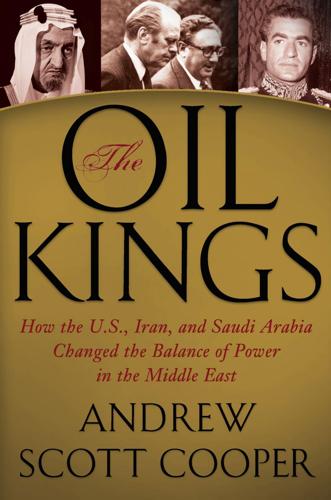
The Oil Kings: How the U.S., Iran, and Saudi Arabia Changed the Balance of Power in the Middle East
by
Andrew Scott Cooper
Published 8 Aug 2011
If prices do suddenly plunge below that level—and if producers have not left themselves with enough of a financial cushion to absorb the blow from lost export receipts—the potential exists for a fiscal meltdown. Billions of dollars in anticipated revenue would disappear. Tehran would be forced to economize and decide whether to spend money on guns or butter—whether to lavish aid on Hezbollah and Hamas or to prop up the complex system of food, fuel, housing, and transportation subsidies that keeps Iran’s middle class in check. Removing the subsidies would increase the potential for protests and clashes between security forces and opposition groups.
…
The Shah had asked his court minister to draw up an itinerary that called for a private meeting with Nixon. Now that he could raise oil prices at will, the Shah had the Twitchell Doctrine squarely in his sights. With the defeat of Pakistan six months earlier, all that remained of his neighbor to the east was a traumatized rump state scratching at Iran’s back door for handouts of guns and butter. The real game changer, as far as Nixon and Kissinger were concerned, came on April 9, 1972, when Iraq followed Egypt and India in signing a treaty of friendship with the Soviet Union. The Shah had repeatedly warned them that Iran was being encircled by the Communists from all sides. Now the Soviets seemed on the verge of establishing a naval presence in the Persian Gulf.
…
From Tehran on July 12, Farland back-channeled Kissinger to complain that General Williamson “has hesitated to push US armament sales since there is definitely a point of view in certain echelons USG [United States Government] to effect that we should do that which is possible to prevent Iran, in our studied wisdom, from over-buying.” In Farland’s opinion, “as long as Iran can financially afford guns and butter there is no reason for us to lose the market, particularly when viewed over the red ink on our balance of payments ledger.” The Shah’s recent decision to order from Great Britain eight hundred tanks at a cost of $250 million was the result of Williamson’s reckless caution. Farland asked that Williamson be “counseled accordingly.”
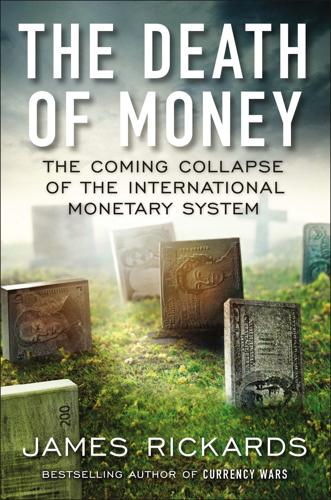
The Death of Money: The Coming Collapse of the International Monetary System
by
James Rickards
Published 7 Apr 2014
Only later is it discovered that bankers and astute investors captured the wealth, and everyday citizens are left with devalued savings, pensions, and life insurance. The 1960s and 1970s are a good case study in money illusion. From 1961 through 1965, annual U.S. inflation averaged 1.24 percent. In 1965 President Lyndon Johnson began a massive bout of spending and incurred budget deficits with his “guns and butter” policy of an expanded war in Vietnam and Great Society benefits. The Federal Reserve accommodated this spending, and that accommodation continued through President Nixon’s 1972 reelection. Inflation was gradual at first; it climbed to 2.9 percent in 1966 and 3.1 percent in 1967. Then it spun out of control, reaching 5.7 percent in 1970, finally peaking at 13.5 percent in 1980.
…
In the case of a dollar glut, a new asset is sought to provide substitutes for investing reserves and to restore confidence. Either way, the IMF has long been involved in the contemplation of alternatives to the dollar. By the late 1960s, confidence in the dollar was collapsing due to a combination of U.S. trade deficits, budget deficits, and inflation brought on by President Lyndon Johnson’s “guns and butter” policies. U.S trading partners, notably France and Switzerland, began dumping dollars for gold. A full-scale run on Fort Knox commenced, and the U.S. gold hoard was dwindling at an alarming rate, leading to President Nixon’s decision to end the dollar’s gold convertibility, on August 15, 1971.
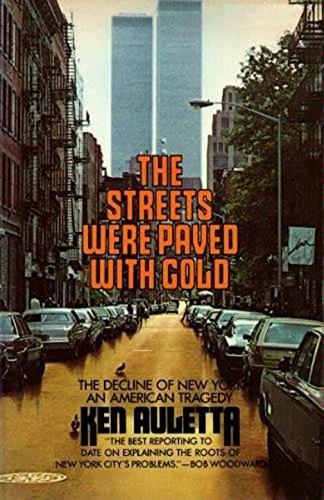
The Streets Were Paved With Gold
by
Ken Auletta
Published 14 Jul 1980
While the game was divorced from rules, it was not divorced from the political ethos of the time. The public was demanding, expecting, more. In truth, it would have been difficult, even if New York had enjoyed strong leadership, to have cut the city’s budget. The sixties saw Mayor Wagner pledge a local war on poverty. President Kennedy promised Camelot. President Johnson promised both guns and butter. Mayor Lindsay promised Fun City. Martin Luther King had a dream. The Great Society was going to transform slums into Scarsdales, Vietnam into Ohio. Public expectations rose. Cities seethed with rage when the inflated promises of the Great Society and New Frontier were not met, and City Hall tried to step into the breach.
…
Americans want free trade—yet they condemn imports which rob American jobs. We want to attract middle-income people back to our cities—but not to outbid and displace poor people from their old yet restorable homes. We want higher farm subsidies—and cheaper food prices. More government spending—and less inflation. More guns and butter. But, as Peter Jay notes, “So far the only road to paradise lies through the grave.” In New York, the failure to make choices speeded the fiscal crisis. One of the best explanations of why, not how, the city arrived at its present state is contained in a book that does not mention the fiscal crisis.
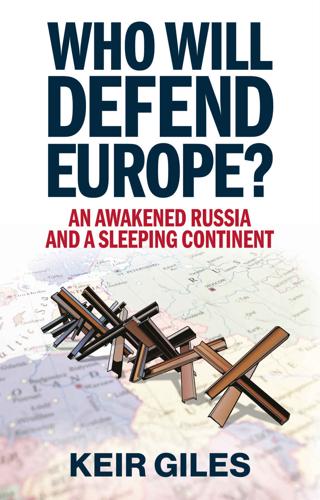
Who Will Defend Europe?: An Awakened Russia and a Sleeping Continent
by
Keir Giles
Published 24 Oct 2024
“Defence Expenditure of NATO Countries (2014-2024)”, NATO, 17 June 2024, https://www.nato.int/cps/en/natohq/news_226465.htm 93.Murray Brewster, “Canada confirms plan to replace submarine fleet at NATO summit”, CBC News, 10 July 2024, https://www.cbc.ca/news/politics/submarine-blair-trudeau-nato-1.7259718 94.Patrick Swadden, “What Honda’s historic $15B investment means for Alliston, Ont.”, CBC News, 27 April 2024, https://www.cbc.ca/news/canada/toronto/alliston-ontario-honda-investment-local-1.7186794 95.Joe Varner, “Canada’s selfish disregard of defence is the Achilles heel of NATO’s northern security”, The Hub, 14 June 2024, https://thehub.ca/2024/06/14/joe-varner-canadas-selfish-disregard-of-defence-is-the-achilles-heel-of-natos-northern-security/ 96.I discussed Russian campaigns against Ireland at length in Russia’s War on Everybody. 97.Conor Gallagher, “Ireland ‘scrutinising’ Russian diplomats’ visa applications amid spying concerns”, The Irish Times, 17 February 2024, https://www.irishtimes.com/politics/2024/02/17/ireland-scrutinising-every-new-application-from-russian-diplomats-coming-here-amid-concerns-about-espionage/ 98.Brian Mahon, “Only Russian ‘good will’ can keep Irish no-fly zone intact”, The Times, 28 February 2022, https://www.thetimes.co.uk/article/only-russian-good-will-can-keep-irish-no-fly-zone-intact-0cg6jq23d 99.Tom Sharpe, “Putin’s subs have exposed Ireland’s shameless hypocrisy”, The Telegraph, 4 June 2024, https://www.telegraph.co.uk/news/2024/06/04/nato-sea-power-cui-russian-submarines-ireland-eu/ 100.Nick Childs, “Gauging the Gap: The Greenland–Iceland–United Kingdom Gap – A Strategic Assessment”, IISS, 3 May 2022, https://www.iiss.org/research-paper/2022/05/gauging-the-gap-the-greenland-iceland-united-kingdom-gap-a-strategic-assessment/ 101.As for instance “Vinner Putin väntar en större konflikt” (If Putin wins, expect a bigger conflict), Svenska Dagbladet, 19 March 2024, https://www.svd.se/a/76XxQ3/debattorer-vinner-putin-vantar-en-storre-konflikt 102.EPP Group on Twitter, 9 November 2023, https://twitter.com/EPPGroup/status/1722562675698438368 103.Sylvia Kauffmann, “Les aveuglés”, Stock, October 2023. 104.Glenn Hubbard, “NATO Needs More Guns and Less Butter”, The Wall Street Journal, March 7 2022, https://www.wsj.com/articles/nato-needs-more-guns-and-less-butter-russia-ukriane-defense-spending-security-investments-11646688247 105.Elena Sánchez Nicolás, “Kallas: Russia’s defeat crucial to avoid Third World War”, EUObserver, 21 March 2024, https://euobserver.com/world/158259 106.Alex Vershinin, “The Attritional Art of War: Lessons from the Russian War on Ukraine”, RUSI, 18 March 2024, https://rusi.org/explore-our-research/publications/commentary/attritional-art-war-lessons-russian-war-ukraine 6.READINESS AND RESILIENCE 1.Helsinki Security Forum, 29 September 2023, https://www.youtube.com/watch?
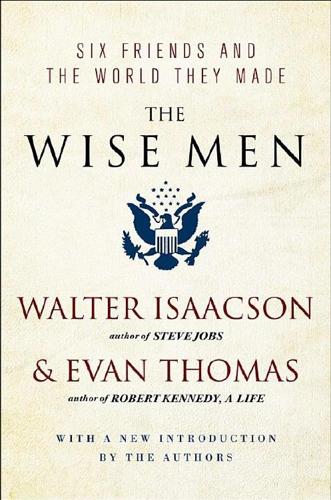
The Wise Men: Six Friends and the World They Made
by
Walter Isaacson
and
Evan Thomas
Published 28 Feb 2012
Kennan, Memoirs, 1950–1963, 266–318; Kennan to Jeannette Kennan, Dec. 16, 1962, Kennan private papers courtesy of Joan Kennan Pozen; Kennan to Robert Oppenheimer, Nov. 16, 1972, Kennan to William Sloane Coffin, Aug. 27, 1965, Kennan to Llewellyn Thompson, Apr. 5, 1966, Kennan to Emmet John Hughes, May 31, 1966, Kennan to Arthur Schlesinger, Jr., Oct. 17, 1967, Kennan papers, Princeton university; New York Times, Feb. 11, 1966. LOVETT AND VIETNAM: Authors’ interviews with Robert Lovett, John McCloy; Lovett Oral History, 1964, Kennedy Library; Burch, “The Guns, Butter, and Then-some Economy”; McGeorge Bundy to President Johnson, Jan. 26, 1966, LBJ Library. NITZE AND VIETNAM: Authors’ interviews with Paul Nitze, Leslie Gelb; Brandon, Anatomy of an Error: The Inside Story of the Asian War on the Potomac, 1954–1969, 169; Berman, Planning a Tragedy: The Americanization of the War in Vietnam, 113.
…
New York Times Magazine (Mar. 5, 1967). Brinkley, Alan. “Minister Without Portfolio—The Most Influential Private Citizen in America: The Life and Times of John McCloy.” Harper’s Magazine (February 1983). Bumiller, Elisabeth. “Pamela Harriman.” Washington Post (June 12, 1983). Burch, Gilbert. “The Guns, Butter, and Then-some Economy.” Fortune (October 1965). Chase, Edward. “The Decision Not to Bomb Auschwitz,” private paper (courtesy of John McCloy). Clifford, Clark. “A Vietnam Reappraisal: The Personal History of One Man’s View and How It Evolved.” Foreign Affairs (July 1969). Cohen, Warren. “Acheson, His Advisers, and China, 1949-50,” in Berg and Heinrichs, eds., Uncertain Years: Chinese-American Relations, 1947-50.
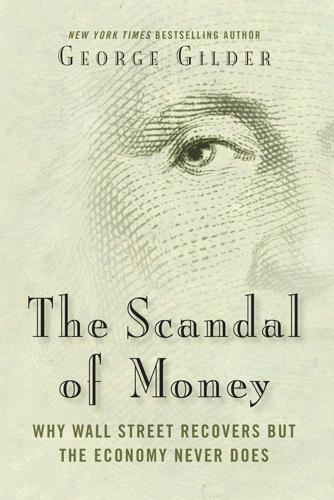
The Scandal of Money
by
George Gilder
Published 23 Feb 2016
Norton, 2011), 261–64. 13.Richard Vigilante, personal communication. CHAPTER 14: RESTORING REAL MONEY 1.Friedrich Hayek, “Toward a Free Market Monetary System,” in James A. Dorn and Anna J. Schwartz, eds., The Search for Stable Money (Chicago, IL: University of Chicago Press, 1987), 383. 2.Arnold Kling, “Turning Guns to Butter: How Postwar America Brought the Boys Home without Bringing the Economy Down,” Reason, October 12, 2010. Kling’s larger theory is expounded in his definitive Unchecked and Unbalanced: How the Discrepancy between Knowledge and Power Caused the Financial Crisis and Threatens Democracy (Lanham, MD: Rowman & Littlefield, 2010).
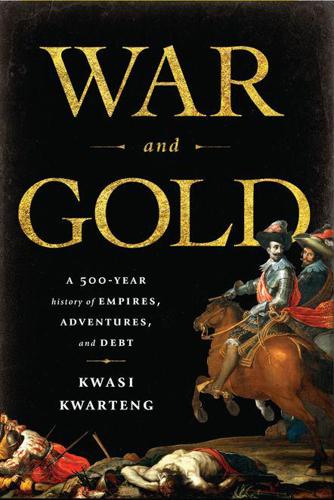
War and Gold: A Five-Hundred-Year History of Empires, Adventures, and Debt
by
Kwasi Kwarteng
Published 12 May 2014
When ‘they finally decided to take the plunge to deliberate deficit creation they found that the opposition they [had] feared was a shadow’.9 Fiscal discipline had given way to a much more relaxed approach. The main contributors to the loosening of fiscal restraints were of course the twin needs for ‘guns and butter’, the old phrase referring to the demands for military and civilian spending. These two forms of expenditure were represented by greater commitments to the Vietnam War and to the needs of the Great Society, a social programme which President Johnson launched in 1965. In August of that year, the Defense Secretary Robert McNamara asked for and received a US$1.7 billion emergency appropriation from Congress to help pay for the Vietnam War.
…
He also urged the President to ask the Congress for ‘a tax increase’.10 In the winter of 1965–6 President Johnson was struggling to identify the principal themes and strategic goals of his administration. In the words of one of his excellent biographers, the President’s eagerness to do the right thing ‘convinced him that the country was rich enough and committed enough to have guns and butter’.11 In his State of the Union address in January 1966, he renewed his commitment to the war and to creating the Great Society, a society in which poverty and deprivation would be abolished. ‘This Nation is mighty enough,’ he thundered, ‘its society is healthy enough, its people are strong enough, to pursue our goals in the rest of the world while still building a Great Society here at home.’12 None of the Congressmen present could have doubted the strength of the President’s conviction or the vigour of his idealism.
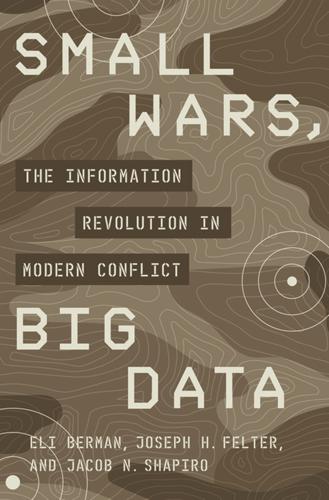
Small Wars, Big Data: The Information Revolution in Modern Conflict
by
Eli Berman
,
Joseph H. Felter
,
Jacob N. Shapiro
and
Vestal Mcintyre
Published 12 May 2018
“Somalia’s al-Shabab Militants ‘Execute Informers,’” Al Arabiya English, 7 January 2015, http://english.alarabiya.net/en/News/africa/2015/01/07/Somalia-s-al-Shabab-militants-execute-informers-.html, accessed 23 May 2016. 12. In India, as we will discuss in more detail in chapter 8, Naxalite insurgents increased their attacks on civilians in many areas when the government began providing a basic income guarantee through a public works program. Gaurav Khanna and Laura Zimmermann, “Guns and Butter? Fighting Violence with the Promise of Development,” Journal of Development Economics 124, no. 1 (2017): 120–41. 13. Jonathan Miller, “Taliban Hunt Wikileaks Outed Afghan Informers,” Channel 4 News, 30 July 2010, http://www.channel4.com/news/articles/uk/taliban+hunt+wikileaks+outed+afghan+informers/3727667.html, accessed 23 May 2016. 14.
…
One innovative aspect of this research is the use of natural language processing to code incident reports in order to extract perpetrator and victim types. 69. Eli Berman, Jacob N. Shapiro, and Joseph H. Felter, “Can Hearts and Minds Be Bought? The Economics of Counterinsurgency in Iraq,” Journal of Political Economy 119, no. 4 (2011): 766–819, appendix A, p. 813. 70. Gaurav Khanna and Laura Zimmermann, “Guns and Butter? Fighting Violence with the Promise of Development,” Journal of Development Economics 124, no. 1 (2017): 120–41. 71. Aditya Dasgupta, Kishore Gawande, and Devesh Kapur, “(When) Do Anti-Poverty Programs Reduce Violence? India’s Rural Employment Guarantee and Maoist Conflict,” 22 April 2016, available at SSRN: https://ssrn.com/abstract=2495803 or http://dx.doi.org/10.2139/ssrn.2495803. 72.
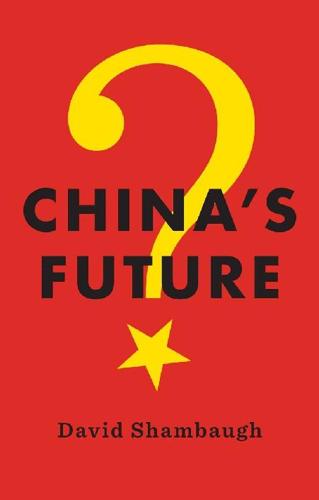
China's Future
by
David Shambaugh
Published 11 Mar 2016
The steady pace and targeted scope of the modernization program has been strategically planned and executed. And there is no sign that the build-up will not continue over the next decade and beyond.46 Military modernization will likely be immune from fluctuations in the economy or other domestic dislocations discussed in chapters 2–4. There is no evident “Guns vs. Butter” debate in China. Figure 5.7 China’s Military Spending 2000–2014 Source: State Council Information Office; Reuters. This progress noted, however, it should be said that the PLA has not had any real combat experience since 1979. Analysts also note various problems in China’s military-industrial complex, the PLA’s training regimen, its logistics system, and its C4ISR (command, control, communications, computers, intelligence, surveillance, and reconnaissance) capabilities.
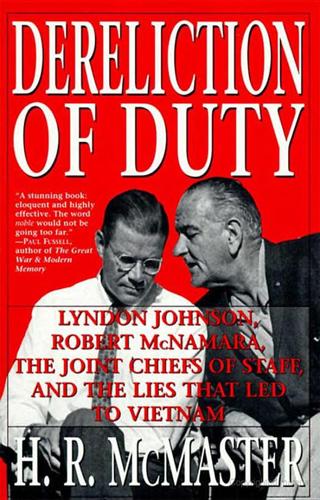
Dereliction of Duty: Johnson, McNamara, the Joint Chiefs of Staff, and the Lies That Led to Vietnam
by
H. R. McMaster
Published 7 May 1998
Johnson would need congressional approval to mobilize reserves and to obtain additional funds to finance the war. Mobilization or a request for funds, however, would have sparked an enormous controversy over Vietnam that might have led representatives to conclude that the country could not afford both “guns and butter.” Presidential aide Jack Valenti recalled that in July 1965, the president was “in the middle of the biggest legislative fight of Johnson’s history.”43 Although he knew that financing the deployments that he had already decided to approve would cost approximately eight billion dollars in fiscal year 1966, the president thought it “impossible” for him to submit to Congress before January 1966 a supplementary budget request of more than three or four hundred million dollars.44 Intent on obscuring the cost of the war from the body that held constitutional authority over appropriations and declaring war, the president directed Vance to have the Defense Department ready to explain to Congress that no additional funds were needed until January, at which time they would “be able to come up with clear and precise figures as to what is required.”45 Separately McNamara suggested that, to avoid inflation, the president finance the war through additional taxation.
…
There’s no question that he wanted to sotto-voce the whole thing.” On July 19 McGeorge Bundy showed the president a draft memo intended for key senators arguing that deeper U.S. involvement in Vietnam did not require additional appropriations. He included the observation that “it would create the impression that we have to have guns, not butter—and would help the enemies of the president’s domestic legislative Program.” Johnson ordered Bundy to “rewrite” the memo eliminating the reference to the Great Society. It was clear to Bundy that the president would “never admit” that the Great Society shaped his Vietnam decisions because “he would have thought that going around advertising that you’re adjusting your public words to the nature of your legislative program suggested you didn’t deserve to be in charge of the legislative program.”47 While concern over an escalation of the war was genuine, Johnson exaggerated the danger of Chinese intervention to justify his unwillingness to ask congressional approval of measures that might jeopardize his domestic legislation.

The Rise and Fall of Nations: Forces of Change in the Post-Crisis World
by
Ruchir Sharma
Published 5 Jun 2016
Maduro’s comments suggested that he recognized the scale of the subsidy problem but did not necessarily indicate that he was going to interfere less in the economy, because he was proposing to take money out of energy subsidies and put it into a welfare fund that pays for other giveaways. The debate over “guns versus butter” started before World War II and found its most famous proponent in President Dwight Eisenhower, the general and war hero who argued that heavy spending on America’s “military-industrial complex” would threaten its ability to produce civilian goods. Today, the debate has shifted to roads versus butter and the argument that every dollar a government spends subsidizing free food or energy is a dollar it cannot spend building roads or other infrastructure, which boost future growth in a way that freebies cannot.
…
“Mahatma,” 236 Garotinho, Anthony, 78 Gates, Bill, 104, 119, 124 GDP (gross domestic product): analysis of, 407 and civil wars, 142 and credit markets, 300, 301n, 302 and current account, 273, 296 and debt, 149, 216, 291, 300, 317, 320, 328 global, 2–3, 19, 243 and government spending, 135–39, 164 and inflation, 235, 238 and investment, 202–3, 204, 205–6, 217, 231–32 and leadership, 86–87 and manufacturing, 204–6, 214–15 per capita, 345–46, 347 and population growth, 30 rising, 8 and wealth gap, 107–10 Geographic Sweet Spot (Rule 5), 166–200, 402–3; see also location geopolitics, 172–75 Germany, 93, 138, 192, 208 billionaires in, 116, 121, 122, 388 currency in, 294 economic strength of, 286, 387–88, 391, 400 fall of Berlin Wall in, 215 Hartz reforms in, 215, 387 hype about, 335 and immigration, 45, 50, 53, 388 industrialization in, 144, 215 leadership in, 387, 388 and location, 388 per capita income in, 32 population growth rates in, 26, 45 retirement in, 37, 39, 45 slump in (1860s), 6 state bank in, 245, 388 workforce in, 19, 32, 37, 41, 55–56, 388 Ghana, 12, 87, 354 Giang Ho, 336 Gini coefficient, 99–100 global cities, 197–200 global economy: competition in, 17, 57, 68, 173–74, 193, 295 cycles in, 2, 3, 10, 172 protection measures, 172–73 global financial crisis (2007–2009): and debt, 300, 302–3, 327–28 effects of, vii, viii, xi–xii, 59, 69–70, 102, 253, 274–75, 279, 324–25, 328 and emerging markets, 146–48, 280 and global trade, 2, 172–75 and government spending, 146–47, 164 and new regulations, 276 onset of, 338 preceding events (BC), 1, 5, 13, 101, 102, 132, 177, 276, 358, 359 reality in years following (AC), 1, 5–6, 71, 134, 137, 173, 400 recovery from, 17, 23–24, 60, 93–94, 150 and state banks, 151–52, 276 as systemic crisis, 23 unexpectedness of, 5, 11, 337–38 globalization: and asset prices, 257–58 deglobalization, 274–77, 296, 394, 399 trends in, 1, 8, 199, 211, 295 and wages, 101 gold standard, end of, 252 Goldstone, Jack, 92 “golf course capitalism,” 331, 351 Good Billionaires/Bad Billionaires (Rule 3), 95–131 bad billionaires defined, 100, 105–6, 111, 121–22 billionaire lists, 100, 103–5, 111–12, 116–17, 120–21 and corrupt societies, 127–29 good billionaires defined, 104–5, 111 quality: good vs. bad, 110–15, 121–24 rise of billionaire rule, 129–31 see also wealth Goodhart’s Law, 13, 18 governments: key tasks of, 135 meddling, see Perils of the State too-small, 141–43 government spending, 135–41, 145–51, 164 Great Depression (1930s), 172, 173, 254, 258, 299, 325 Great Recession (2007–2009), see global financial crisis Greece, 5, 20 backsliding, 288, 346 corruption in, 137, 164 currency crisis in, 286, 293 debt crisis in, 51, 127, 137–38, 163–64, 300, 301, 327 economic cycle in, 88, 286 government collapse (2011), 80 tourism in, 288 Gref, German, 60, 67 Guericke, Konstantin, 49 guns versus butter, 158 Haiti, 346 Hanushek, Eric, 16 Harari, Yuval, 199 Henry I, king of England, 264 Hessler, Peter, 42 Hong Kong, 171, 176, 253, 254, 346 Huang, Yukon, 196 Humala, Ollanta, 76 Human Development Index (HDI), 10 Hungary, 151, 176, 320 Hussein, Jaffer, 246 Hussein, Saddam, 89 hype: applying the rules to, 351–55 of commodity economies, 340–42, 343 constant vigilance in, 344–47 on convergence myth, 338–41, 352 cover stories, 334–38, 347, 349–52 and disaster scenarios, 343–44 of emerging nations, 4, 8, 9, 333–34, 338–40 focus on one growth factor, 11, 14 indifference vs., 332, 333, 347–51 and media negativity, 349–50 of need for structural reform, 62–63 time differentiation in, 330, 335 Hype Watch (Rule 10), 329–55 Iceland, 88 immigration: anti-immigrant forces, 27, 44, 49, 53 and capital flight, 52–53 economic, 2, 48, 170 highly skilled, 48–54 and social services, 50 student visas, 49 and workforce, 28, 44–54 incremental capital output ratio (ICOR), 149 India, 157, 174, 283 bureaucracy in, 133, 162, 209 corruption in, 105–6, 112, 129, 164 economic cycle in, 8, 10, 62, 63, 94, 358, 375 GDP of, 4–5, 12, 175 and geopolitics, 172–73, 175 government spending in, 149, 150, 164 HDI ranking, 10 hype about, 4, 10, 333, 334, 336, 338, 345, 358, 370 and immigration, 50, 52 inflation in, 4, 236–38, 250–52, 374 infrastructure in, 374 international business in, 18, 375, 394 investment in, 205, 208–9, 231, 250, 374 leadership in, 70, 79, 81, 94, 350–51, 373–75 location of, 185, 374–75 manufacturing in, 208–10, 213 nationalism in, 81–82 population centers in, 195–97 population growth rates in, 26–27, 30, 31 prices in, 234–38 and regional alliances, 180–81, 375 service jobs in, 212–13, 218, 221 social unrest in, 4, 31, 70, 73, 74, 236 stagnation in, 6, 75 state banks in, 151–52, 153–54, 374 state intervention in, 135–36, 196 tax evasion in, 128–29 war with Pakistan, 97, 375 wealth gap in, 102, 105, 112, 116, 120, 129 workforce in, 32, 42–43, 44, 209 Indonesia, 116, 120, 326 and budget deficit, 148, 158, 163 closed economy of, 174, 178 commodities economy of, 227, 342, 376 currency of, 292, 293, 321 debt in, 320–23, 324, 325, 327 economic growth in, 82, 349 energy subsidies in, 157–58 financial deepening in, 327 GDP of, 175, 205 and hype, 330–31, 349 and international trade, 179–80, 293 leadership in, 59–60, 82, 93, 143 population growth rates in, 30 and regional alliances, 377 social unrest in, 70, 321 state banks in, 151, 320–23 industrialization, 98 and investment, 205 and population growth, 195 state assistance in, 144, 145–46 see also manufacturing Industrial Revolution, 6, 35, 255 inflation, 234–61 containment of, 21, 65 and currencies, 264–65, 292 and deflation, 5, 252–57 and economic growth, 238–40, 326, 365 and GDP, 235, 238 and government collapse, 242, 247 hyperinflation, 69, 97, 155, 239 and investment, 233, 238, 240 persistence of, 252 and prices, 237, 240–42, 257–61 stagflation, 64, 65, 240, 395 war on, 240–46 infrastructure, 10 and export trade, 207–8 inadequate, 141–43 investment in, 21, 135, 158, 175, 232–33 interest rates, 229, 235, 239, 240, 244, 260, 306, 335 International Monetary Fund (IMF): bailouts from, 5, 65, 68, 272, 280, 354, 372 on capital flight, 280 and debt, 299 on economic growth factors, 12, 152 forecasting record of, 336–38 on global debt crisis, 259, 324 global recession defined by, 2 and hype, 335–37 on inflation, 241 reforms required by, 68, 248, 372 WEO database of, 407 on women’s opportunities, 43 Internet, 1, 8, 221 censorship of, 308 “crowdfunding” sites on, 313 and global trade, 176, 197, 199 hype in, 334 information flow on, 1 service jobs for, 210, 211–13 shopping via, 257–58 investment: in commodities, 223–29 as economic indicator, 15, 202–3, 205–6, 233 in education, 16–18 by entrepreneurs, 158, 209, 226 and GDP, 202–3, 204, 205–6, 217, 231–32 good vs. bad, 203 ideal level of, 205–6 and inflation, 233, 238, 240 in infrastructure, 21, 135, 158, 175, 232–33 in manufacturing, 203–6, 232 and price shifts, 344 in real estate, 222–23, 229–31 shift from private to public, 149 speculation, 229–31, 313–14, 382 in technology, 218–21, 229, 233, 255 weak, 231–33 Iran, 174, 190 birth rate in, 26 economic cycle in, 87, 88, 346, 348 hype about, 346, 348 as Shiite theocracy, 170 trade with, 170–71 workforce in, 42 Iraq: economic cycle in, 87, 88, 89 hype about, 346, 348 leadership in, 89 refugees from, 2, 44 wars in, 167, 346 Ireland, 29, 288, 300, 346 Islam, Shiite-Sunni divide, 170 Israel, 175, 218–19 Italy, 83, 136, 192, 204 birth rate in, 26 debt in, 310, 385 internal devaluation in, 287 leadership in, 70, 81 wealth gap in, 102, 116–17, 121, 122 workforce in, 32, 39, 44 Jaitley, Arun, 106 Jamaica, 5, 66, 339 Japan, 26, 141, 190, 194 agriculture in, 384 bank crises in, 316, 319 billionaires in, 110, 116, 121 currency in, 294, 385 debt in, 300, 307, 316, 317, 318–19, 320, 384, 385 deflation in, 253–54, 256, 260 economic cycle in, 8, 57, 83, 93, 94, 175, 238, 308, 310, 317, 335 economic reform in, 384 and global trade, 176, 178, 184, 187, 294 hype about, 329–30, 334, 335, 348, 351 and immigration, 47, 50, 52, 384 industrialization in, 144, 178 insularity of, 46 investment in, 221, 238, 253, 318, 385 manufacturing in, 203, 212–13 and per capita GDP, 346 population decline in, 46, 383 reconstruction period in, 29 and regional alliances, 179, 183, 384 slump (1990s), 6, 258, 329, 335 technology in, 295 tourism in, 384–85 workforce in, 32, 37, 41, 43, 44, 55–56, 384, 385 “zombie companies” in, 318–19 Jim Yong Kim, 48 jobs: availability of, 32, 37, 55 in government or state-owned companies, 155–56 manufacturing as source of, 15 new, 57 replaced by machines, 16, 24, 101 and service sector, 202, 209–13, 221 Jobs, Steve, 49 Johnson, Simon, 176 Jonathan, Goodluck, 226, 352, 398 Jordan, 88, 206 Jordà, Òscar, 259 Jospin, Lionel, 34 Juncker, Jean-Claude, 80 Kahneman, Daniel, 56 Katz, Lawrence, 55 Kaunda, Kenneth, 96 Kenya, 31, 181–82, 190, 238, 354–55, 398–99 Kenyatta, Uhuru, 355, 399 Keynes, John Maynard, 149–50 Khan, Genghis, 8, 187 Khodorkovsky, Mikhail, 350 Kim Dae-jung, 66–67, 71 Kim Il-sung, 96 Kim Jong-il, 74, 86, 94 Kirchner, Nestor, 9, 64, 74, 76, 98 Kissinger, Henry A., 79 Kiss of Debt (Rule 9), 297–328 Zielinski play, 297–98, 299, 323 see also debt Kohler, Hans-Peter, 35 Koizumi, Junichiro, 335, 351 Kudrin, Alexei, 60, 67, 74 Kuznets, Simon, 101, 299 Lagarde, Christine, 58 Laos, 180 Latin America, 364–70 economic cycles in, 93, 291, 310, 342 infrastructure in, 186 and location, 177 regional alliances, 179, 182–83, 366 wealth gap in, 95–96, 97, 125–26 see also specific nations Lavagna, Roberto, 74 leadership: aging, 3, 59, 71–72, 75, 114 arrogance of, 59, 60, 61, 62, 71, 72 autocrats vs. democrats, 21, 63, 82, 85–91, 132, 333, 365 charismatic, 61, 68, 69 in circle of life, 60–62, 364–65 corruption of, 3, 12, 60, 61, 67, 91, 97, 105–6, 114, 127–29, 226, 320, 379 and elections, 364–65 fresh, 63, 64–70, 75, 76–77, 86, 94, 388 populist, 59, 77–80, 96–99, 363–64 and regional alliances, 179 stale, 21, 59, 61, 63, 70–77, 86, 92, 94, 249, 376, 392–93 technocrats, 63, 80–85, 237 tenure of, 73–75, 90 Li, Robin, 113 Libya, 4, 74, 92, 167, 168, 185 life expectancy, 10, 19, 25, 26, 28, 44 and retirement, 37, 38–40 Li Keqiang, 84, 150, 312 location, 166–200 and economic growth, 175–78, 199–200 and global trade, 171–75, 176–89, 199–200 population centers, 189–97 regional alliances, 173–75, 178–84, 199 service cities, 197–200 and shipping routes, 185–86, 402–3 long term, myth of, 399–401 López Michelsen, Alfonso, 188 Lucas, Robert, 280 Lucas paradox, 280 Lula da Silva, Luiz Inácio, 66, 69, 71, 74, 79, 284 Ma, Jack, 113, 114 Macri, Mauricio, 83, 365–66 Maduro, Nicolás, 158 Ma Huateng, 113 Maktoum, Sheikh Mohammed bin Rashid Al, ruling family of, 166–67 Malaysia, 190, 342 banking crisis in (1990s), 316 debt in, 299, 300, 306, 315, 325 economic cycle in, 29, 327, 378–79 and global trade, 174, 178, 180 hype about, 330, 331, 345, 348 immigration to, 48, 51 investment in, 206, 231 leadership in, 60, 76, 379 manufacturing in, 205 state banks in, 151, 323–24 wealth in, 107, 118 Malta, 342, 348 Malthus, Thomas, 27, 343 Manuel, Trevor, 341 manufacturing: and economic growth, 15–16, 216, 227, 341 for export, 207–8 and GDP, 204–6, 214–15 and innovation, 15, 204 international, 213–15, 216 investment in, 203–6, 232 and productivity, 15, 204–5, 207 stabilizing effect of, 215–17 virtuous cycle of, 206–10, 215, 221, 228 Mao Zedong, 84 Marcos, Ferdinand, 7, 79, 334 Marino, Roger, 49 markets: cycles of, viii–x, 74–75 and leadership, 79–81 predictive power of, 13–14, 75 Marx, Karl, 92 Mauro, Paolo, 336 Mboweni, Tito, 245 Meirelles, Henrique, 69, 245 Menem, Carlos, 82 Mercosur trade bloc, 182–83, 366 Merkel, Angela, 45, 387, 388 Mexico, 368–70 breakdown in government functions, 201–2 corruption in, 141 currency crisis (1994) in, 5, 65, 148, 273, 281, 285, 298, 324 debt of, 291, 298, 324–25 economic cycle in, 98, 348, 400 government spending in, 140, 141, 148 and immigration, 53–54 inflation in, 242, 246, 370 infrastructure in, 232, 369 investment in, 203, 205, 220, 232, 368, 369 leadership in, 81, 94, 98, 368–69 location of, 168, 169, 177, 193, 199–200, 370 manufacturing in, 369–70 and oil, 130, 368, 369 population centers in, 193–94, 199 population growth rates in, 26, 30, 369 and regional alliances, 183, 199, 370 social unrest in, 70, 77, 98 technology in, 219–20 wealth gap in, 115, 120, 364 workforce in, 40, 43 middle class: anger of, 3, 5, 72–73, 76–77 growing, 204 jobs for, 213 and wealth inequality, 102 Middle East: Arab Spring, 4, 31, 76, 91–92, 167, 242 energy subsidies in, 156, 157 investment in, 169–70 political unrest in, 167, 168, 169, 170, 396 restrictions on women in, 42 see also specific nations middle-income trap (hype), 344–45 Mikitani, Hiroshi, 110 Modi, Narenda, 79, 94, 210, 350–51, 370, 373–75 Mohamad, Mahathir, 60, 231, 280, 330 money flows, 2, 5, 268–70, 275, 277, 279–90, 292, 295–96 Monti, Mario, 81 Morales, Evo, 76 Morocco, 168, 185, 190, 199 Moynihan, Daniel Patrick, 234–35 Mozambique, 225, 354 Mubarak, Gamal, 133 Mubarak, Hosni, 76, 92 Mugabe, Robert, 86, 88–89, 96–97, 373 Musk, Elon, 123–24 Myanmar, 187, 333, 334 Nakasone, Yasuhiro, 46 Nanda, Ramana, 220 natural resources, 223–29 Nehru, Vikram, 81, 82 Netherlands, 41–42, 50, 176, 224–25, 255, 256, 299 news media, see hype New Zealand, 244 Nguyen Tan Dung, 90–91 Nicaragua, 98 Niger, 66, 339 Nigeria: commodities economy of, 4, 174, 223, 225–27, 228, 293, 394, 398 corruption in, 226–27, 398 economic cycle in, 88, 348, 398 GDP in, 12, 87, 227 government spending in, 141–42 hype about, 348, 398 inflation in, 242 leadership in, 352–53, 365, 398 and regional alliance, 182 slipping backward, 202, 205, 232, 398 workforce in, 19, 29, 31, 185 North America Free Trade Agreement (NAFTA), 183 North Korea, 74, 86, 96, 136, 174 Norway, 90, 225, 300, 346, 348 Nyerere, Julius, 96 Obasanjo, Olusegun, 398 OECD (Organization for Economic Cooperation and Development), 40, 44, 48–49 oil: and bad billionaires, 100, 111 and corruption, 226 curse of, 12, 169, 224, 227 and “Dutch disease,” 224–25 exporters of, 155, 174, 341, 394 extraction of, 124–25 investment in, 223, 224, 225, 228 offshore, 130 price of, 4, 29, 60, 62, 64, 65, 89, 111, 114, 154–55, 227–29, 257, 268, 282, 293, 333, 342, 348, 362, 393, 394, 398 shale, 228–29 Okonjo-Iweala, Ngozi, 227 Oman, 342 Omidyar, Pierre, 49 OPEC, 64, 65, 240, 333 Ortega, Daniel, 98 Osborne, Michael, 54 Osnos, Evan, 145 Ostry, Jonathan, 125–26 Ozden, Caglar, 51 Pacific Alliance, 183–84, 199 Pakistan, 142, 180, 370–73 infrastructure in, 187, 372 leadership in, 77, 94, 96, 372 service jobs in, 212 war with India, 97, 375 workforce in, 31, 42, 370–71, 373 Palaiologos, Yannis, 164 Paldam, Martin, 241 Palestine, 175 Papademos, Lucas, 80 Paraguay, 182, 183, 242 Park Chung-hee, 85 Park Geun-hye, 47, 383 pattern recognition, 7–11 Peña Nieto, Enrique, 94, 115, 368–69 People Matter (Rule 1), 23–57; see also workforce per capita income, 10, 339–40, 348 Perils of the State (Rule 4), 132–65 and bad billionaires, 127–29 devaluing the currency, 290–96, 381 energy subsidies, 156–58 and leaders, see leadership meddling in private companies, 158–62, 246, 250–51 and population growth, 33, 35–36 privatization, 161–62, 177 sensible role for state, 162–65 state banks, 134, 151–54, 243–44 state companies as political tools, 154–56, 165 Perón, Juan, 333 Persson, Stefan, 174, 179 Peru, 52, 188, 190, 291 commodities economy of, 174, 228, 368 investment in, 228 leadership in, 98 and Pacific Alliance, 183–84 workforce in, 43 pessimism, prevailing fashion of, 9, 275, 360, 399 Philippines, 180, 193, 194, 198 economic recovery in, 327, 350, 375–76, 378 economic slowdown in, 346 hype about, 333, 334, 348 investment in, 232, 375–76 leadership in, 79, 97, 376 population growth in, 31 service jobs in, 212–13, 221 social unrest in, 70, 77 wealth redistribution in, 97 workforce in, 19, 31 Piketty, Thomas, 104 Piñera, Sebastián, 34–35, 95–96, 98, 102, 126 Pinochet, Augusto, 82, 98, 99 Pires, Pedro, 353 Poland, 139, 190, 339 billionaires in, 109, 120, 391 currency of, 288–90 debt in, 391 investment in, 205, 215, 391 leadership in, 74–75, 365 location of, 168, 176, 177, 198–200 political shift in, 391 population growth rate in, 30, 39 private economy in, 159, 160, 161 workforce in, 39, 391, 392 population growth: baby bonuses, 33–36 decline in, 19–20, 24–32, 44, 56, 392, 394, 399 and economic growth, 29–32, 57 forecasts of, 25, 27, 28, 32 measurement of, 21 and replacement fertility rate, 26, 33, 37, 47 and workforce growth, 18–19, 39, 57 populism, 59, 60, 77–80, 81–82, 96–99, 100, 247, 363–64, 389 Portugal, 29, 30, 39, 288 Price of Onions (Rule 7), 234–61; see also inflation; prices prices, 234–61 asset, 257–61 of commodities, 111, 114, 174, 228, 263, 278, 341–42, 354, 365, 386; see also oil consumer, 235, 256, 257–61 and currency, 294 and deflation, 256 falling, 4, 5, 253–54 of food, 234, 235, 236, 241–42, 365 to foreign buyers, 258 “Mapping the World’s Prices,” 265 of money, 304 public anger about, 237, 241–42 stabilizing, 261 of stocks, 313 validity of data about, 13 wage-price spiral, 240 Pritchett, Lant, 336, 347 production: chain of, 27 as growth factor, 15–16 productivity: elusive x factor in, 20 and government spending, 148–49 and ICOR, 149 and immigration, 51 in manufacturing, 15, 204–5, 207 measurement of, 17, 18–21 and population trends, 39, 57 and technology, 220–21 Putin, Vladimir, 18, 42, 392–94 and billionaires, 114, 115, 350 and economic reforms, 58–59, 60, 61, 67–69, 78, 284 hype about, 342, 350, 393, 394 and populism, 59 rise to power, 61, 66, 67 and social unrest, 73–74 and stale leadership, 60, 71–72, 76, 114, 159–60, 392 and state intervention, 159–60, 350 Qaddafi, Muammar el-, 74 Rahman, Sheikh Mujibur, 96 Rajan, Raghuram, 251 Rajapaksa, Mahinda, 180, 373 Rao, Jaithirth, 209–10 Razak, Najib, 379 Reagan, Ronald, 64–65, 66, 70 Real Effective Exchange Rate (REER), 265, 267, 272 real estate: bad billionaires in, 100, 105, 107, 108, 110–11, 364, 369 and debt, 310–13 investment binges in, 222–23, 228, 229–31, 382, 387 prices of, 108, 257–61, 309, 312, 382, 389 and state banks, 154 recessions: 1930s (Great Depression), 172, 173, 254, 258 1970s, 2, 64, 65 1980s, 2, 64, 305 1990s, 2, 6, 13, 64, 66, 68, 83, 138, 148, 161 2007–2009, see global financial crisis in Asia (1997-1998), see Asia China as possible source of, 2–3 cycles of, 2, 14, 64–66, 87–88 debt as cause of, 260, 298–99, 301, 303–4, 308–10, 317–19 dot-com bust, see dot-com bubble forecasting of, 14, 337–38, 400 official documentation of, 14 U.S. origins of, 2, 132, 303–4, 305–6, 308–9, 327–28, 362 Regional Comprehensive Economic Partnership, 173 rent-seeking industries, 110–11, 122, 123, 124 Renzi, Matteo, 81, 94 Rhodes-Kropf, Matthew, 220 Rickards, James, 168 Robinson, James, 176 robots, 27, 36, 54–57, 214 Rockefeller, John D., 124 Rodrik, Dani, 207 Romania, 87, 162, 238, 348, 391–92 Rothschild, Baron de, 349 Rousseff, Dilma, 80, 152–53, 155, 366, 368 Roy, Nilanjana, 236 Rubin, Robert, 341 Russia, 193, 326, 344 aging population in, 72 authoritarianism in, 3, 60 author’s speech in, 58–59 banking crisis (1990s), 61 billionaires in, 103, 107, 114–15, 116, 119, 120, 364, 393 birth rate in, 26 brain drain from, 52 capital flight from, 52, 281, 282, 367 commodities economy in, 4, 205, 225, 341, 367, 376, 393, 397 currency of, 263, 265, 268, 281, 282, 289, 291, 393, 394 debt in, 59, 291, 327, 394 economic growth in, 17, 60, 63, 66, 69, 159, 340, 358 economic slowdown in, 346, 392 education in, 17 financial deepening in, 327 GDP of, 4, 175, 394 government spending in, 139, 149, 394 hype about, 4, 338, 347, 348, 350 inflation in, 241, 242, 246 international business in, 18, 394 international sanctions against, 282 investment in, 205, 208, 232, 394–95, 397 leadership in, 349, 392–94; see also Putin, Vladimir oil in, 29, 60, 62, 72, 114, 155, 159, 265, 282, 341, 342, 393, 394 oligarchs in, 107, 114–15, 160, 268 per capita income in, 61, 68 political cronyism in, 4, 159, 160 reforms in, 58, 59, 60, 61, 66, 67, 68, 78 social unrest in, 4, 73–74 state banks in, 151–52, 159, 282 stock exchange in, 161 tech companies in, 17, 159–60 workforce in, 30, 42, 155, 393 Rwanda, 181, 182, 199 Rybolovlev, Dmitry, 107 Sakurauchi, Yoshio, 329–30 Samuelson, Paul, 13 Santos, Manuel, 188, 189 Sassen, Saskia, 197 Saudi Arabia, 29, 42, 170, 190 currency of, 396 energy subsidies in, 156, 157 GDP in, 87 government spending in, 139, 396 leadership in, 87, 396 and oil prices, 227–28, 279, 333, 394 roller-coaster economy of, 227–28 savings, 16, 277–79 Scandinavia, 35, 42 Schlumpeter, Joseph, 360 Schularick, Moritz, 259 service businesses, 204, 210–13 service cities, 197–200 Sharif, Nawaz, 94, 372 Sharma, Rahul, 170–71 Shinawatra, Thaksin, 79, 97 Shinawatra, Yingluck, 78–79, 217 Sierra Leone, 225 Silk Road, 8, 187–88, 399 Singapore, 32, 33, 175, 182, 238, 346, 348 Singh, Manmohan, 62, 73, 74–75, 133, 187, 234–37, 250 Sirisena, Maithripala, 181 Sisi, Abdel Fattah el-, 76, 157 social upheavals: Arab Spring, 4, 31, 76, 91–92, 167, 242 “middle-class rage,” 72–73 as revolts against stale leadership, 21, 61, 70, 72, 73–74, 77, 92 spread of, 3, 91–92 South Africa: commodities economy in, 223, 225, 263, 376, 397 corruption in, 164 currency in, 397 debt of, 291 decline in development of, 3, 6, 205, 346, 397 economic growth in, 10, 38, 90, 340 HDI ranking, 10 immigration to, 48 investment in, 232, 397 leadership in, 76, 90, 352–53, 397 life expectancy in, 10 social unrest in, 4, 73, 74 South Asia, 370–75, 400 commodities economies in, 371 political instability in, 180, 373 regional alliances, 179, 180 restrictions on women in, 42 Southeast Asia, 375–80 economic cycle in, 310, 324, 326, 327, 349, 375–76, 400 and global trade, 176, 178, 179–80 and hype, 330, 331 South Korea, 190, 197–98 and China, 382 debt in, 216, 321 economic growth in, 10, 66–67, 87, 175, 216, 238, 308 government spending in, 140, 146 HDI ranking, 10 homogeneity in, 46–47 hype about, 333, 334, 339 inflation in, 237, 246 and international business, 179, 382–83 investment in, 205, 206, 218, 221, 225, 238, 253 leadership in, 66–67, 82, 85, 93, 349 literacy in, 17 manufacturing in, 205, 212–13, 214–15, 216, 225, 382–83 per capita income in, 215, 316 productivity in, 20 robots in, 56 technology in, 218, 221, 295, 382 wealth in, 107–8, 109, 116, 117–18, 120, 121–22, 383 workforce in, 40, 43, 44, 47, 56, 140, 383 Soviet Union: after 1991, see Russia central plan of, 81, 85 fall of, 29, 67, 107, 109, 151, 198, 208, 242 Spain, 29, 32, 192 current account in, 288 debt in, 327–28, 389–90 internal devaluation in, 287 manufacturing in, 387 Spence, Michael, 341 Spence Commission, 341–42 Sri Lanka, 180–81, 187, 212, 365, 370–71, 373 stagflation, 64, 65, 240, 395 stagnation, 6, 83, 88, 91, 105, 172, 192 state banks, 134, 151–54 state capitalism, 133–35, 155 stock markets: best time to buy in, 349 and crisis of 2008, 146–47 mania/crash, 258–61, 313–14, 318 signals from, 13, 74–75, 133, 134, 258, 313 state-run companies in, 135 “structural reform,” 62–63, 163 Studwell, Joe, 17, 143–44 Sudan, 142, 185 Suharto, 59–60, 82, 93, 293, 320–21, 330 Summers, Lawrence, 104, 336, 347 supply and demand, 256–57 supply networks, 235, 238, 239–40, 243, 253, 292, 365 supply side, 24 Surowiecki, James, 13 Sweden, 42, 50, 136, 138 billionaires in, 108, 116, 121, 123 debt in, 300 economic cycle in, 17, 90, 256 financial crisis (1990s), 317 and inflation, 245 Switzerland, 41, 50, 121, 138–39, 198, 294 Syria: and Arab Spring, 92, 167 civil war in, 4, 92, 168, 224 economic cycle in, 87, 88 leadership in, 89 refugees from, 2, 44, 48 Taiwan, 144, 151, 190 banking crises in (1995, 1997), 316, 317 and China, 382–83 debt in, 291, 307, 317–18 economic growth in, 87, 175, 238, 308, 348 government spending in, 140, 146 hype about, 333, 334, 345, 346, 348 and international business, 382–83 investment in, 205, 218 leadership in, 82, 86, 93 literacy in, 17 per capita income in, 316 and regional alliances, 179, 383 and technology, 221, 295 wealth in, 107–8, 118, 120, 122 working-age population in, 383 Tanzania, 96, 181–82 taxes: corporate, 63, 138 cutting, 67 evading, 128, 137, 142, 164 failure to collect, 141–43 and government spending, 136–37 import tariffs, 172 inheritance, 124 and public services, 140 Taylor, Alan M., 259, 304, 310 technology: automation, 214 cycle of, 8, 124, 218–21 driverless cars, 54 and immigration, 51–52 investment in, 218–21, 229, 233, 255 and jobs, 101, 211, 212 and leisure time, 199 and productivity, 20, 51, 119, 220–21 robot workers, 27, 36, 54–57, 214 and service businesses, 210, 211–13 3-D printing, 8, 214 Tetlock, Philip, 400 Thailand, 47–48, 189–90 capital flight from, 272, 292 commodities economy in, 342, 379 credit binge in, 199, 297, 298–302, 306, 315, 328, 380 currency of, 217, 267, 271–73, 273, 285–86, 292 economic contraction in, 286, 349, 379 economic growth in, 79, 217, 256, 348, 380 economic recovery of, 288, 302, 325, 327 and hype, 330, 349 infrastructure in, 207–8, 230 and international trade, 174, 178, 179–80, 216 investment in, 206, 217, 225, 230–31 leadership in, 78–79, 97, 379–80 manufacturing in, 216–17, 225, 227, 379 military coup in (2014), 379–80 population growth rates in, 30, 47 social unrest in, 78–79, 189, 190, 217 state banks in, 151, 321, 323–24 Thatcher, Margaret, 64–65, 68, 94 Thiel, Peter, 104, 119, 125 thrift, 16, 277–79 Time, 331, 334–35, 347, 349, 350, 352 tourism, 2, 37, 199, 211, 288, 384–85 trade balance, 269 Transatlantic Trade and Investment Partnership, 173, 179 Trans-Pacific Partnership, 173, 178, 361, 377, 378, 383, 384, 386 Trudeau, Justin, 386 Trump, Donald, 53, 364 Tsai Ing-wen, 383 Tunisia, 91–92, 224 Turkey, 190, 326 currency of, 273–74, 280, 283, 291, 292, 293, 396 debt of, 291, 306, 327, 328 economic growth in, 66, 69, 72 financial deepening in, 327 government spending in, 139, 247–48 hype about, 345, 348 immigration to, 48 inflation in, 241, 242, 246, 247–50, 326 leadership in, 60, 66, 71–72, 74, 349, 395 and location, 395–96 per capita income in, 68, 331, 348 population growth in, 31 populist nationalism in, 60, 72, 247 reforms in, 67–68, 72, 248, 249, 331 social unrest in, 4, 61, 72, 73, 74 wealth in, 114, 116, 120 Tusk, Donald, 74–75 Uganda, 87, 181, 354–55 United Arab Emirates, 167, 170 United Kingdom, see Britain United Nations (UN), 10, 47 on population growth, 19, 25, 27, 33, 44–45 United States, 194–95, 360–64 billionaires in, 107, 108, 114, 116, 118–19, 121, 123–25, 364 birth rate in, 26 checks and balances in, 364 credit markets in, 13, 298, 303–4, 305–6, 316 currency of, 266, 271, 272, 362–63 current account deficit in, 278, 362–63 debt in, 363 economic growth in, 3, 288, 337–38, 340 economic recovery in, 24, 64–65, 102, 360 economic strength of, 266, 400 financial speculation in, 102 and geopolitics, 172–73 and global trade, 184, 185, 402–3 government spending in, 138, 139 and hype, 361–62 and immigration, 45, 49–50, 52, 53, 360 industrialization in, 144, 215 inflation in, 240–41, 258 infrastructure in, 207, 208 life expectancy in, 39, 40 and location, 176–77, 200 long boom of, 255–56 manufacturing in, 204, 213, 214, 215, 361 oil and gas in, 228–29, 362 per capita income in, 32, 66, 339, 346 polarization in, 62–63, 132, 363–64 productivity in, 20, 51–52, 220–21, 257, 303 recessions originating in, 2, 132, 303–4, 305–6, 308–9, 327–28, 362 and regional alliances, 173–75, 178, 183, 188, 199, 361, 383, 384, 386 “second term curse” in, 70–71 technology in, 20, 218, 221, 294, 303, 361–62 Treasury bonds, 280 Washington Consensus, 132–33 and wealth gap, 101, 102, 364 workforce in, 19, 32, 37, 41–42, 43–44, 360 Uribe, Álvaro, 77, 183, 350 Uruguay, 300 Velasco, Juan, 98 Venezuela, 4, 158 economic cycle in, 87, 346, 365 leadership in, 64, 69, 76, 77, 98, 365 oil in, 333, 334 and regional alliances, 182, 366 Vietnam, 42, 202 billionaires in, 118 Communist Party in, 377–78 currency in, 295 fiscal deficit in, 377 and global trade, 174, 176–78, 180, 295 hype about, 345 inflation in, 378 investment in, 378 leadership in, 90–91 location of, 168, 177–78, 185, 378 manufacturing in, 213, 378 per capita income in, 178, 378 population centers in, 190, 191, 199 Viravaidya, Mechai, 47 Volcker, Paul, 241, 245, 335 wage-price spiral, 240 Walton family, 119 Wang Jianlin, 114 wealth: balance in, 103 billionaire lists, 100, 103, 104, 116, 117, 120–21 and capital flight, 52–53, 107, 279–81, 292 creation of, 99, 103, 115 crony capitalism, 105–6, 112, 130, 332 of entrepreneurs, 118–19, 122 in family empires/inherited, 104, 116–21 measures of, 101 redistribution of, 95, 96–98, 99, 101, 126 of robber barons, 124 scale of, 107–10 and state meddling, 127–29 wealth gap, 95–96, 99–102, 364 and corruption, 127–29 and easy money, 101–2, 108 and economic declines, 125–27 rise of, 129–31 welfare states, 64, 65, 93, 97, 126, 138, 140–41 Wen Jiabao, 307, 308, 311–12 Widodo, Joko, 143, 157, 163, 376–77 Wiesel, Elie, 331–32 wildebeest, survival of, viii, ix, xi women: and birth rates, 18, 25–26, 28, 33–36, 43, 44, 47, 392 economic restrictions on, 42 education of, 26, 41 working, 28, 34, 35, 36, 40–44, 47 workforce: aging, 392 and available jobs, 32, 37, 55 and baby bonuses, 33–36 and economic growth, 24, 26, 52 global, 55–56 growth rate in, 28–32 highly skilled, 48–54 hours worked by, 18 and immigration, 28, 44–54 manual labor, 213 new people in, 28, 36, 57 participation rate in, 36–37 and pension funds, 279 and population declines, 24–32, 35, 38, 43, 44, 56 and productivity data, 18–19, 39 replaced by machines, 16, 24 and retirement, 36–40 robots in, 54–57 skilled, 48–54 wages, 101, 184, 185, 204, 214, 243, 257 women in, 28, 34, 35, 36, 40–44, 47 World Bank: on convergence, 339, 341 data set of, 407 on economic growth factors, 12, 18, 342, 346 forecasting record of, 336, 338 on inflation, 242 on infrastructure, 186, 187 on middle-income trap, 345 on new business, 48 on service sector, 210–11 Spence Commission, 341–42 on wealth gap, 100 on workforce, 42, 51 world economy, 358–401 absence of optimism in, 359 combined scores of, 358–59 crisis (2008), see global financial crisis disruptions of, 358–59 potential growth rate of, 359 world maps, 356–57, 402–3 see also specific nations World Trade Organization, 177 Wu Jinglian, 314 Xiao Gang, 311 Xi Jinping, 120, 156, 187, 208 Yellen, Janet, 101 Yeltsin, Boris, 67, 242 Yemen, 92 Yudhoyono, Susilo Bambang (SBY), 93, 157 Zambia, 96, 354 Zambrano, Lorenzo, 219–20 Zeihan, Peer, 184 Zielinski, Robert, The Kiss of Debt, 297–98, 299, 323 Zimbabwe, 86, 88–89, 96–97, 373 Zoellick, Robert, 242 “zombie companies,” 318–19 Zong Qinghou, 113 Zuckerberg, Mark, 104, 119, 124 Zuma, Jacob, 352, 397 ALSO BY RUCHIR SHARMA Breakout Nations: In Pursuit of the Next Economic Miracles ABOUT THE AUTHOR Ruchir Sharma is head of emerging markets and chief global strategist at Morgan Stanley Investment Management, with more than $20 billion of assets under management.
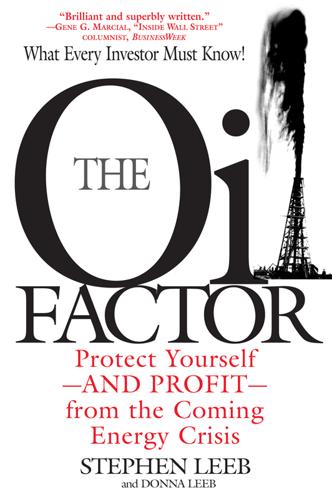
The Oil Factor: Protect Yourself-and Profit-from the Coming Energy Crisis
by
Stephen Leeb
and
Donna Leeb
Published 12 Feb 2004
If, as it has been said, hanging wonderfully concentrates the mind, $100 oil should go far toward clarifying our real options. Social Spending One reason inflation was so high during the latter 1960s was that President Johnson wanted to fight the war in Vietnam without sacrificing social programs at home, in a formulation that came to be known as “guns and butter.” In today’s world, there will be comparable pressures on the government to keep spending on social initiatives, which in today’s environment come on top of energy as well as military outlays. One reason is that four-letter word, “debt,” that overhangs the economy like a sword of Damocles. With the huge consumer debt levels making the economy so vulnerable to any hint of a slowdown, the government will have to get into the business of stimulating the economy with additional spending anytime the situation calls for it.
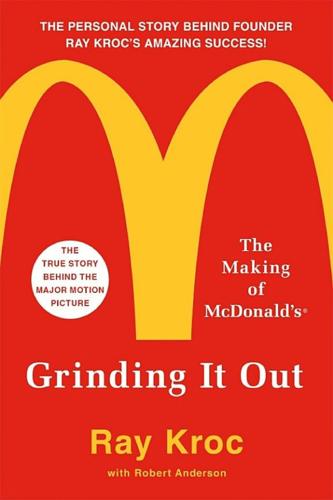
Grinding It Out: The Making of McDonald's
by
Ray Kroc
Published 1 Jan 1977
After all, it was our first, except for recommending raising cheeseburgers from nineteen cents to twenty cents and minor raises in fries, shakes, and Filet-O-Fish. After twelve years of operation, the fifteen-cent hamburger had come to be cherished as one of our foundation stones. Well, hell! We were in the midst of Lyndon Johnson’s muddle-headed “guns and butter” economy with the war in Vietnam, and even our increasingly sophisticated purchasing operations could not cope with inflation. Some of our people believed we should recommend an increase to twenty cents instead of eighteen. But I came down hard on that one. They argued that customers wouldn’t want to be bothered with pennies, and that it would be harder for our girls and boys to make change.
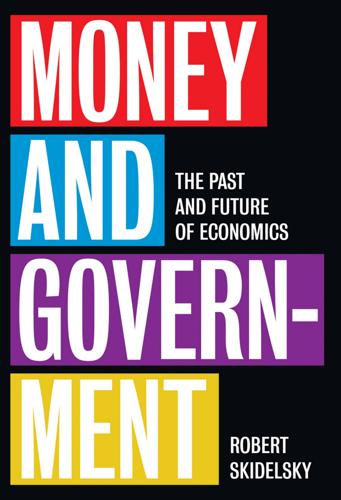
Money and Government: The Past and Future of Economics
by
Robert Skidelsky
Published 13 Nov 2018
The revolutionary principle behind President Kennedy’s $13 billion tax cut of 1963 (enacted the following year, after his assassination) was that taxes were to be cut when the economy was well on the way to recovery, and the actual budget was in deficit. There were further tax cuts and expenditure increases in 1965 (the latter to finance ‘guns and butter’: rising military expenditure caused by the Vietnam War and Lyndon Johnson’s ‘Great Society’ programme). Only in the 1960s then, in Tobin’s judgement, did ‘the view of the economic mechanism commonly accepted by men of affairs’ finally move into line with the ‘models’ that economists had long worked with; only then were the ‘phobias about public spending, budget deficits, and internal public debt . . . largely overcome or forgotten’.28 At first everything went according to the script.
…
The economist Raghuram Rajan has described a situation in which America’s growing inequality and thin social safety net create tremendous political pressure to encourage easy credit and keep job creation robust, no matter what the consequences to the economy’s long-term health; and where the U.S. financial sector, with its skewed incentives, is the critical but unstable link between an over-stimulated America and an underconsuming world.14 Alternatively, one might seek to explain the persisting American deficit in geopolitical terms: the simultaneous quest for guns and butter was part of the US commitment to policing the world without making any sacrifice in its domestic living standards to do so.15 The source then of America’s structural deficit can be traced to the stagnation of real earnings in the United States. Easy money in the US produced no upsurge in US domestic investment.
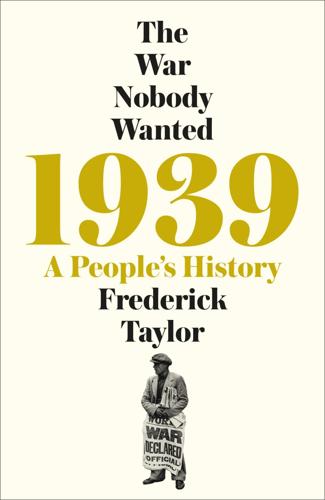
1939: A People's History
by
Frederick Taylor
Published 26 Jun 2019
This observation could be made in the broad circles of industry and the middle class as well as in the countryside. The current improvement in morale due to the Führer’s speech cannot therefore be a lasting one, because economic hardships and grievances in town and country are causing general difficulties.49 If it was really trying to persuade the German population to put ‘guns before butter’, the regime would have to work even harder – and provide even more spectacular successes that fed into stirring speeches by the Führer. There could be no standing still. On 1 February 1939, Goebbels’s diary tells us that he visited Hitler on the day after the speech, in which the Führer had relieved the world and its stock exchanges by declaring no new foreign initiatives.
…
Josepha von Koskull, a single working woman in her late thirties in Berlin, remembered the more problematic side of the Nazi ‘miracle’: With each salary adjustment, of which there were several after the ‘seizure of power’, I had my salary reduced, because I was, of course, not a Party member. As a librarian in the end I was receiving a salary less than that of the secretaries. My little flat became almost too expensive for me. Long before Hermann Göring offered us guns instead of butter, I was buying margarine instead of butter and was forced to do without coffee, cake on a Sunday, and much else besides. Out of my small salary I had to pay contributions to the Labour Front, the People’s Welfare, and the Air Raid Protection. One could not avoid belonging to these three organizations if one was employed in the Third Reich.
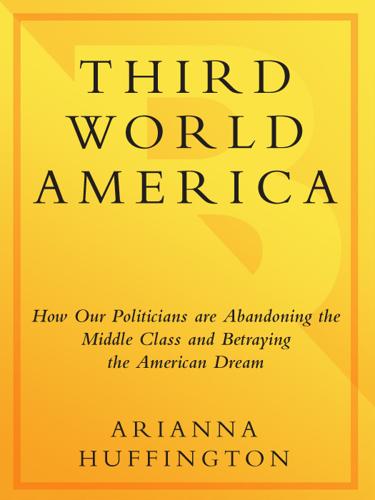
Third World America: How Our Politicians Are Abandoning the Middle Class and Betraying the American Dream
by
Arianna Huffington
Published 7 Sep 2010
No, it was that unrepentant lefty five-star general Dwight Eisenhower, in 1953, just a few months after taking office—a time when the economy was booming and unemployment was at 2.7 percent.76 Yet today, while America’s economy sputters down the road to recovery and the middle class struggles to make ends meet—with more than twenty-six million people unemployed or underemployed and record numbers of homes being lost to foreclosure—the “guns versus butter” argument isn’t even part of the national debate.77 Of course, today, the argument might be more accurately framed as “ICBM nukes, predator drones, and missile-defense shields versus jobs, affordable college, decent schools, foreclosure prevention, and fixing the gaping holes in our social safety net.”
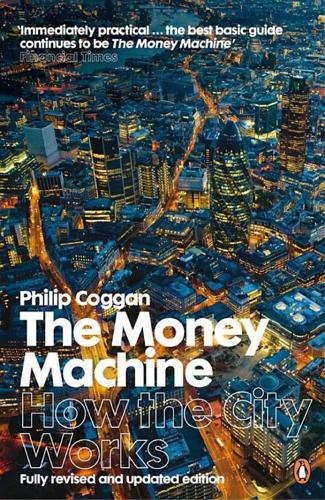
The Money Machine: How the City Works
by
Philip Coggan
Published 1 Jul 2009
The assumption that lay behind the fixed-rate system was that if one country had an excessive current-account deficit, it would alter its domestic economic policies until balance was restored. The system was capable of surviving the occasional hiccup, such as the sterling devaluation in 1967. However, since the system hinged on the dollar, a US balance-of-payments crisis was a potentially mortal wound. Thanks to President Johnson’s attempt to pay for both guns and butter, the US developed enormous current-account deficits which it proved unable to rectify. As a result, the foreign-exchange markets were overloaded with dollars ($1 billion a day flowed into the Bundesbank in May 1971). Speculators had a one-way bet. If they sold dollars and bought a strong currency such as the Deutschmark, they were highly unlikely to lose money, but if the dollar devalued, they would make substantial gains.
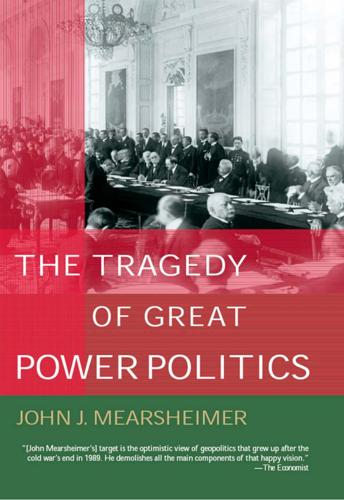
The Tragedy of Great Power Politics
by
John J. Mearsheimer
Published 1 Jan 2001
See Adelman, Prelude, pp. 223–24; Mark Harrison, “The Second World War,” in Davies et al., eds., Economic Transformation, pp. 250–52; and Boris K. Sokolov, “The Role of Lend-Lease in Soviet Military Efforts, 1941–1945,” trans. David M. Glantz, Journal of Slavic Military Studies 7, No. 3 (September 1994), pp. 567–86. 72. See Werner Abelshauser, “Germany: Guns, Butter, and Economic Miracles,” in Harrison, ed., Economics of World War II, pp. 151–70; Alfred C. Mierzejewski, The Collapse of the German War Economy, 1944–1945: Allied Air Power and the German National Railway (Chapel Hill: University of North Carolina Press, 1988), chap. 1; Richard J. Overy, War and Economy in the Third Reich (Oxford: Clarendon, 1994); and Overy, Why the Allies Won, chaps. 6–7. 73.

How Much Is Enough?: Money and the Good Life
by
Robert Skidelsky
and
Edward Skidelsky
Published 18 Jun 2012
The first was that the West as a whole felt it needed to speed up its rate of growth to maintain the arms race with the Soviet bloc. Not only did the Soviet system seem to be growing faster than Western capitalism in the 1960s, but, by suppressing private consumption, it was able to devote a much higher proportion of its growing wealth to military spending. The West needed to show it could produce both guns and butter. The second reason was that faster economic growth was a way of circumventing the facts of power. It offered a way of improving the position of the poor without having to increase taxes on the rich. In this second aspect, economic growth was a left-wing policy to benefit the working class without igniting latent class conflict over the distribution of the national product.

Losing Control: The Emerging Threats to Western Prosperity
by
Stephen D. King
Published 14 Jun 2010
Slavery became less important, not just because of a sudden moment of ethical illumination but also because, economically, the coal-powered steam engine was much more efficient than a group of slaves, no matter how numerous they were or how hard they were made to work. Meanwhile, no longer did people have to make difficult choices over cultivating land for either food or fuel. Land could now be used exclusively for food because fuel was to be found underneath: nations could have both guns and butter. The available land, and the fuel that could be found below its surface, increased dramatically as the eighteenth and nineteenth centuries progressed. Not surprisingly, as the West became economically more powerful, the interests of government and commerce became increasingly inter-related. The idea that market forces alone led to the West’s success is nonsense.
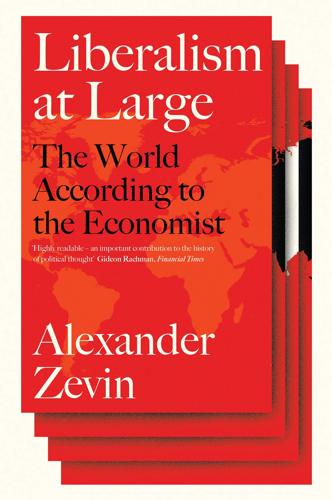
Liberalism at Large: The World According to the Economist
by
Alex Zevin
Published 12 Nov 2019
He built his case precisely on the role the City could play in European integration, liberalizing and linking currency and capital markets as a prelude to Britain joining – and leading – the common market, with the support of the US. Ferguson: High Financier, pp. 208–13. 58.‘The Neurotic Trillionaire’, 10 May 1969. The Economist supported Johnson’s Great Society (‘Richer for Poorer’, 15 August 1964), and reiterated that in the case of the US, it was possible to produce guns and butter at the same time. ‘The war is costing $25,000 million a year; but that is only about half of what the Americans will be adding to their gross national product … the United States can fight the Vietnam war and go on raising its standard of living at the same time. That is the measure of its economic power’: ‘The Impatient Ones’, 19 August 1967. 59.
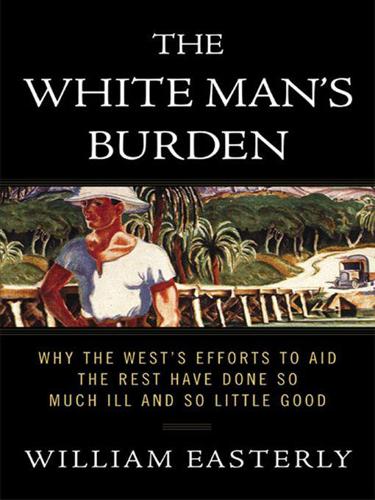
The White Man's Burden: Why the West's Efforts to Aid the Rest Have Done So Much Ill and So Little Good
by
William Easterly
Published 1 Mar 2006
Finding a way to earn money to feed herself and her children was a more pressing concern for her than her eventual death from AIDS. The more sophisticated way to deny that trade-offs exist is to insist that each part of the budget is necessary for everything else to work. When asked to choose between guns and butter, the canny politician insists that guns are necessary to protect the butter. In the AIDS field, strategic responses gave us the mantra “prevention is impossible without treatment.” The proposition rests on the plausible reasoning that people will not come forward to be tested (most HIV-positive Africans do not know they are HIV-positive) unless there is hope of treatment.
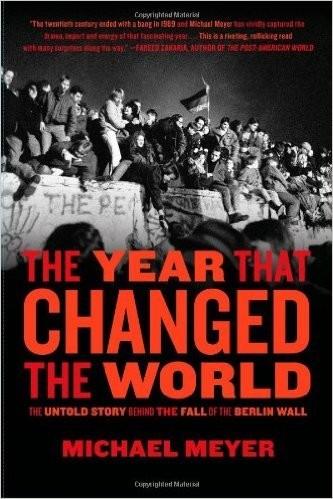
The Year That Changed the World: The Untold Story Behind the Fall of the Berlin Wall
by
Michael Meyer
Published 7 Sep 2009
Postwar investment in Japan and the network of international trade and security organizations that spanned the globe, from SEATO to NATO to the Warsaw Pact, Cominterm and the Common Market cum European Union. All were creatures of the Cold War. It usurped Western culture, which in turn diffused throughout the world. In American schools of the 1950s and early 1960s, kids “ducked and tucked” under their desks against atomic blasts. When they grew up, they explored the trade-offs between guns and butter in Economics 101. They were fluent in the lexicon of confrontation: containment, mutually assured destruction, the domino theory. Everyone knew about the nuclear button, the “hotline” between Washington and Moscow, the briefcase, aka the football, the satchel of nuclear codes that to this day accompanies the president everywhere.
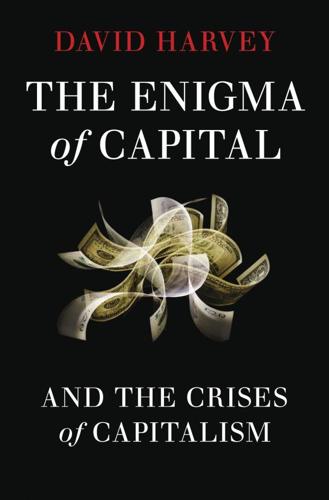
The Enigma of Capital: And the Crises of Capitalism
by
David Harvey
Published 1 Jan 2010
The powers of finance capital, though important, were circumscribed and reasonably transparent. This system worked well, as long as the US refrained from using its power to print dollars in a self-serving way. However, the war in Vietnam and the ‘Great Society’ anti-poverty programmes of the 1960s (a strategy of ‘guns and butter’, as it was said at the time) led to a crisis of the dollar after 1968 or so. It was around this time also that US corporations began to take their surplus capital abroad. Surplus dollars, outside of US control, were accumulating within the European banking system. Belief in the fixed exchange rate of the dollar against gold began to erode.

Microserfs
by
Douglas Coupland
Published 14 Feb 1995
I couldn't believe it. He said I was decadent because I was eating Lucky Charms. He said they were "symptomatic of a culture in decline - sucrose hysteria, you know." I said, "But Todd, Lucky Charms were invented during the Johnson Administration. Society couldn't have been more anti-decline than it was then. Guns and butter . . . I can't believe I'm even talking to you seriously about this. This is silly beyond belief." Anyway, that was the seed notion. Karla and I wrote a big list of "decadent cereals" on the office dry-erase wall: CAP'N CRUNCH: Reason this cereal is decadent: a) Colonialist exploiter pursues naive Crunchberry cultures to plunder. b) Drunkenness, torture, and debauchery implicit in long ocean cruises.
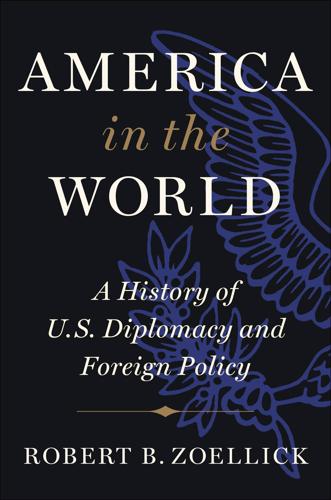
America in the World: A History of U.S. Diplomacy and Foreign Policy
by
Robert B. Zoellick
Published 3 Aug 2020
Eminent commentators offered both support and criticism.42 Whether or not Bator was correct, and whether or not the cost was worth the Great Society, the implication for American diplomacy is that presidents have to juggle international actions with complex domestic and political calculations—and balance both institutional and personal interests and responsibilities. Johnson opted for “guns and butter.” He chose not to prepare the American public for war. He tried to deny the risks to the economy. He did not mobilize the nation’s resources or call up reserves. He did not seek a congressional resolution to clarify his course; he did not even offer a prime-time address to explain the purpose.
…
The new nuclear doctrine was “sufficiency,” no longer “superiority,” in support of a “stable deterrence.” As Robert Osgood and later Michael Green concluded, Nixon’s new grand strategy required “military retrenchment without political disengagement.”61 America was becoming cost-conscious. Washington had run budget deficits in every year but one since 1962. LBJ’s “guns and butter” policy strained the economy, stoking inflation and weakening the U.S. dollar. Europe and Japan, although military allies, had become robust economic competitors. By the time of his visit to China, Nixon would have to devalue the dollar and break the Bretton Woods system of fixed exchange rates, further fueling inflation and threatening the trade and investment regime that had complemented the American alliance system for more than twenty years.
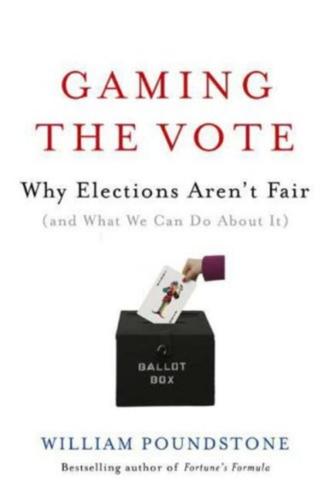
Gaming the Vote: Why Elections Aren't Fair (And What We Can Do About It)
by
William Poundstone
Published 5 Feb 2008
The central planners of left and right were making essentially utilitarian arguments, It's obvious that a dollar spent on welfare pro- 253 GAMING THE VOTE grams benefits the poor more than a dollar in extra taxes hurts the rich. Or we know better than the people do that the budget should be spent on guns, not butter. Robbins offered an intellectually respectable way to say, "Not so fast, nobody knows what makes people happy." Robbins said nothing about voting. And in one significant way, his approach could be judged inapplicable to voting. The preferences expressed in transactions are almost always sincere.
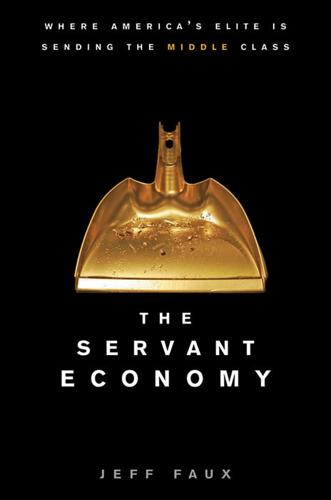
Servant Economy: Where America's Elite Is Sending the Middle Class
by
Jeff Faux
Published 16 May 2012
But as Doris Kearns Goodwin wrote in her 1991 biography of LBJ, “the President was in no mood to listen to such warnings at the moment when the American people were enjoying all the favorable consequences of the boom. . . . While listening to Ackley’s concerns, he flatly refused to consider a tax increase, sticking to his initial position that the American nation could afford guns and butter alike. This decision not to recommend a general tax increase in 1966 was the critical decision that set the economic system into a prolonged period of chaos, from which it has still not recovered.”5 Among those who immediately saw the danger was Martin Luther King Jr. As King understood, the issue was not just money.
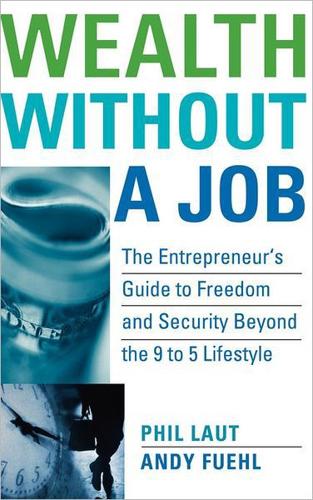
Wealth Without a Job: The Entrepreneur's Guide to Freedom and Security Beyond the 9 to 5 Lifestyle
by
Phil Laut
and
Andy Fuehl
Published 12 Sep 2004
See also specific types of conditioning Conflict: goal-setting and, 148 resolution, 188, 197 Conscious Competence, 39–40 Conscious Incompetence, 39 Contribution, 68 Control factor, 52–53 Corruption, 117 Counterproductive strategy, 35, 95, 106 Creativity: benefits of, 133, 137 clarifying a business, 143–144 commitment and, 138–139 Discovery Writing method, 140–143, 251–252 goals and, 144–146 importance of, 10, 15, 34–35, 133–134 Learning to Ask Better Questions method, 137–138 planning process and, 144–145, 254 problem-solving and, 139–140 sources of, 137, 220 suppression of, 134–135 Credibility, 162 Decision-making skills, 90, 126–127 Decisiveness, 3 Defensiveness, 160 Defiance, 179 Defined benefit pension plans, 23 Defined contribution pension plans, 23 Deletions, 58, 76 Denial, 78, 170 Dependency, 9 Depression, sources of, 35, 56, 69, 91 Desire(s): acceptance of, 91–92 acknowledgment of, 226 for control, 163–164 fulfillment of, 227 limitation of, 142 prioritizing, 92–93 Determination, 125–126 Discovery Writing method, 140–143, 251–252 Dissatisfaction with job, 14–15, 35 Dissociated position, in perception, 109–110, 155, 194–196 Distortions, 58–59, 76 Dot-com bubble, 23–24 Dow Jones Industrial Average (DJIA), 22–24 Dual-income couples, 21 Economic conditions: growth, 19–20 media, impact on, 21–22 terrorism, impact on, 24–26 U.S. stock market, 22–24 wage decline, 20–21 Educational system, 10 Elevator speech, 230 Emotional dynamics, 33–34 Emotional intensity, implications of, 109, 125, 194, 212–214, 221, 263–266 Emotional motivation: Baseball Diamond strategy, 50–52, 132, 199, 224, 259 external motivation, 48–49 importance of, 47–48 life purpose and, 95 self-motivation, 48–50 Emotional overload, 212–213, 230 Emotional reactions, 172 Emotional system, design of, 121–122 ccc_laut_ind_273-278.qxd 7/8/04 12:28 PM Page 275 Index Emotions: Emotional Resolution method, 109–110 emotional system, design of, 121–122 fear, dealing with, 128–129 feelings, 119–126, 172 guilt, 114–119 impact of, 107–108, 125–126 intensity, see Emotional intensity No More Procrastination method, 127–128 struggle and, 110–114, 120 Empowerment, sources of, 6, 32–34, 53, 64, 68, 101, 126, 176 Energy, sources of, 118–119, 122 Entitlement, 74 Entrepreneurship, nature of, 2 European Union, 29 Excellence: characteristics of, 43–44, 57 perceptions of, 105 physiology and psychology of, 42–44 External motivation, 48–49 External reality, 55 eZine, 260 Failure, fear of, 96 Fairness, 74–75 Family, generally: bonds, 80–82 boundaries in, 81–82 dynamics, 80 roles, 85–88 rules, 82–86 Fault, 32–33 Fear: dealing with, 6, 10, 12, 66, 128–129, 211–212 response to, 198 sources of, 95–96, 108, 112, 125, 127, 211, 220 Federal Reserve, 21 Feedback, importance of, 121–122, 197 Feelings: acceptance of, 63–64 conflicts about, 122–123 defined, 119 design of, 121–122 emotional reactions, 172 interpretation of, 52 meaning of, 122, 126 powerlessness over, 119–120 response to, 123–125 VCR Visualization method, 265–266 Filing Cabinet method, 156–157 Finance, Power Affirmations method, 176 Flexibility, mental and behavioral, 41 Focus, 67–68, 138 Follow-up, in sales process, 181 Forgiveness, 65–66, 115 401(k) plan, 23 Frankl, Viktor, 53 Free will, 113 Gandhi, Mohandas, 198 Generalizations, 58, 76 Global economy, see Globalization Globalization, impact of, 27–30 Goal(s): accomplishment of, 133, 172 certainty about, Filing Cabinet method, 156–157 hierarchy of, 94–95, 132, 252 importance of, 45–46, 132–133 perceptions of, 146–147 planning for, 253–254 power affirmations and, 172–173 SMART, 147–150, 154–156, 224, 250, 260 timeline for, 154–156 unconscious, 131–132 Greed, 211, 221 Greenspan, Alan, 21 Growth, 68 Guilt: defined, 114 impact of, 91–92, 96, 105, 211 Power Affirmations method, 176 suppression of, 118 types of, 115–117 unresolved, 114–119 Guns-and-butter strategy, 24 Gustatory representational system, 201, 263–264 Health, Power Affirmations method, 177 Helplessness, 73–74, 110–113, 126, 168 Higher power, 100–101. See also Religious beliefs Hiring strategies, 181–182 Improvements, impact of, 139 Incentives, 199 Information resources, 260–261 Inheritance, 2–3 Inherited purpose, 76–77, 81, 89, 95 Internal reality, 54–55 Internal representational system: impact of, 54–57, 113, 154, 206–207 VCR Visualization method, 265–266 275 ccc_laut_ind_273-278.qxd 7/8/04 12:28 PM Page 276 276 Index Intimacy, 79 Inversion, 169 Job satisfaction, importance of, 9, 11–12, 14–16, 84.
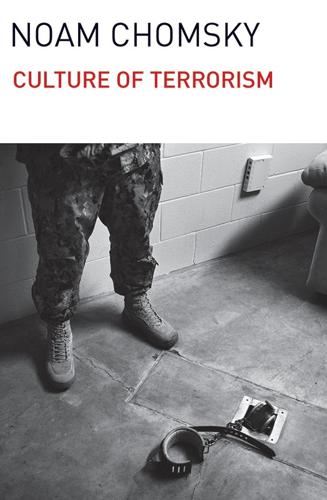
Culture of Terrorism
by
Noam Chomsky
Published 19 Oct 2015
But as the Vietnam war escalated through the stages of subversion, state terrorism, and outright U.S. aggression,1 disaffection and protest among the public became a significant force, preventing the government from declaring the national mobilization that would have been required to win what was becoming a major war. The effort to fight a “guns and butter war” so as to pacify an increasingly restive public gave rise to severe economic problems. These were a factor in leading elite elements to urge that the enterprise be reduced in scale or liquidated by early 1968. The general dissidence, particularly among the youth, was perceived in elite circles as a serious problem in itself by 1968, while within the Pentagon, there was concern that sufficient military force be held in reserve to control domestic disorder if the U.S. aggression visibly increased.
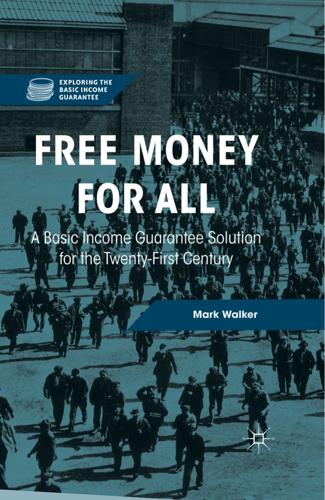
Free Money for All: A Basic Income Guarantee Solution for the Twenty-First Century
by
Mark Walker
Published 29 Nov 2015
Marx, as a good student of Hegel, thought that it was impossible to see into the future as to how these problems would be best resolved.31 To Marx’s critics, this seems like an admission that he has no solution. In the nanobot future, coordination problems mostly disappear. We do not have to decide how many hours each of us should work in a giant factory, and whether the factory should produce guns or butter, because there are no factories, and human labor is no longer needed. Nor do we have to decide socially how much each factory should produce, since we decide for ourselves about what we would like our MOP to produce. A BIG Stepping Stone If we can foresee the end of capitalism, then does not this also threaten BIG?
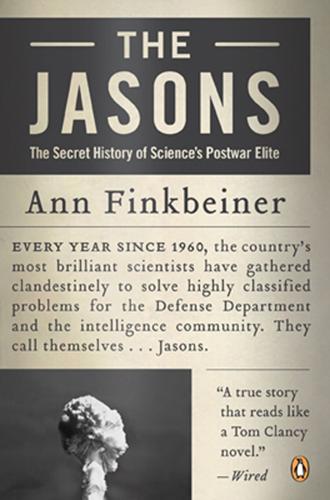
The Jasons: The Secret History of Science's Postwar Elite
by
Ann Finkbeiner
Published 26 Mar 2007
Henry Kelly et al., “Flying Blind: The Rise, Fall, and Possible Resurrection of Science Policy Advice in the United States,” Federation of American Scientists, Occasional Paper no. 2, December 2004, online at http://www.fas.org/static/pubs.jsp. Confusingly, somewhere in the process…had been acting on Rumsfeld’s orders: Rik Kirkland and Bill Powell, “Don Rumsfeld Talks Guns and Butter,” Fortune 146, no. 10 (November 18, 2002), 143–44. The Chronicle of Higher Education cited the Jason story…“the unflinching advice that government officials don’t always want to hear”: Ron Southwick, “Elite Panel of Academics Wins Fight to Continue Advising Military,” Chronicle of Higher Education 48, no. 39 (June 7, 2002), A26–A27.
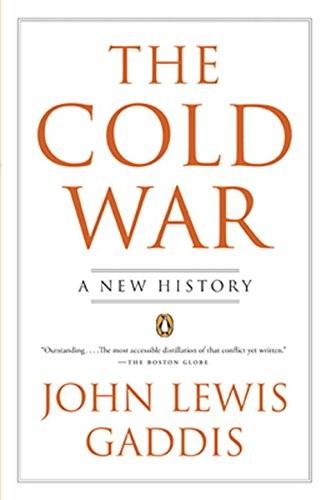
The Cold War: A New History
by
John Lewis Gaddis
Published 1 Jan 2005
American interests in the Cold War, Johnson believed, required that the United States persist in Vietnam until it prevailed. But he was also convinced that he could not reveal what it would take to win without sacrificing the Great Society: the nation would not simultaneously support major expenditures for both “guns” and “butter.” So he sacrificed public trust instead. The term “credibility gap” grew out of Johnson’s sustained attempt to conceal the costs—together with the pessimism with which the C.I.A. and other intelligence agencies, as well as his own war planners, evaluated the prospects for success—of the largest American military operation since the Korean War. 38 It is difficult to understand how Johnson thought he could get away with this.
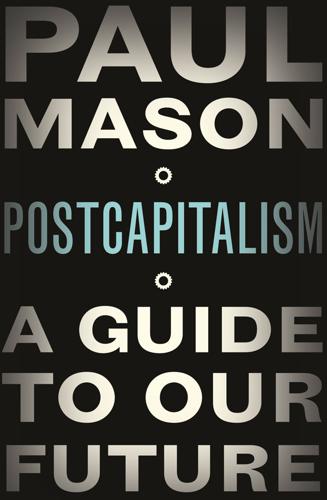
Postcapitalism: A Guide to Our Future
by
Paul Mason
Published 29 Jul 2015
We’ll know it’s underway once the blurred relationship between work and leisure, and between hours and wages, becomes institutionalized. Because its precondition is abundance, postcapitalism will deliver some form of social justice spontaneously – but the forms and priorities of social justice will be negotiable. Whereas capitalist societies always had to worry about ‘guns vs butter’, postcapitalist societies might fight over growth vs sustainability – or the timeframe for delivery of basic social goals, or challenges like migration, women’s liberation and demographic ageing. So we have to design the transition to postcapitalism. Because most theorists of postcapitalism either just declared it to exist, or predicted it as an inevitability, few considered the problems of transition.
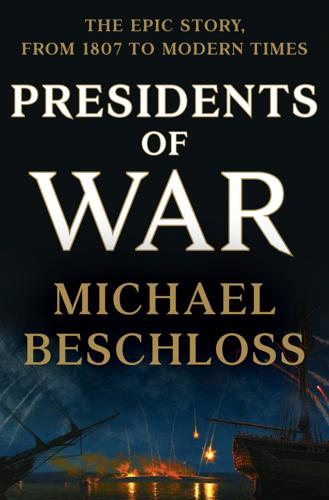
Presidents of War
by
Michael Beschloss
Published 8 Oct 2018
From the start, Johnson had tried to conceal the full, monumental expense of his war from the public and refused calls to cover it with increased taxes because he thought they would dampen support for the conflict and move people to demand cuts in his beloved Great Society programs. Recalling how war had killed the domestic reforms of Roosevelt and Truman, he rudely badgered the Federal Reserve Chairman, William McChesney Martin, to keep interest rates low so that he could have both “guns and butter.” The President finally agreed with Congress on a “temporary surcharge” of 10 percent on personal and corporate income taxes, as well as some spending cuts, but inflation soared.*17 In September 1967, in the Texas city where he had married Lady Bird, Johnson unveiled what he called his “San Antonio formula” for peace: he would stop all bombing “when this will lead promptly to productive discussions,” but only if the enemy “would not take advantage” of the bombing halt.
…
The Declaration of Independence: Its History. New York: Dodd, Mead, 1905. Heckscher, August. Woodrow Wilson. New York: Charles Scribner’s Sons, 1991. Heidler, David S., and Jeanne T. Heidler. Henry Clay: The Essential American. New York: Random House, 2010. Helsing, Jeffrey W. Johnson’s War / Johnson’s Great Society: The Guns and Butter Trap. Westport, CT: Praeger, 2000. Hendrickson, Kenneth E., Jr. The Spanish-American War. Greenwood Guides to Historic Events, 1500–1900. Westport, CT: Greenwood Press, 2003. Hendrix, Henry J. Theodore Roosevelt’s Naval Diplomacy: The U.S. Navy and the Birth of the American Century.
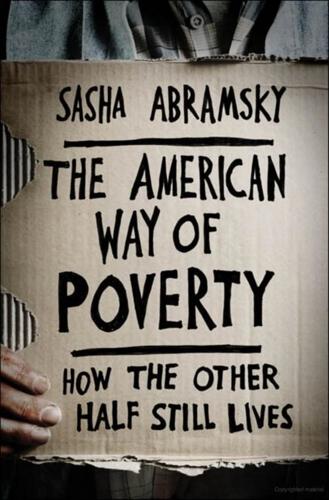
The American Way of Poverty: How the Other Half Still Lives
by
Sasha Abramsky
Published 15 Mar 2013
Michael Katz, “The American Welfare State and Social Contract in Hard Times,” Journal of Policy History 22, no. 4 (2010): 508–529. 20. Richard Parker cites this in his book John Kenneth Galbraith: His Life, His Politics, His Economics (New York: Farrar, Straus and Giroux, 2005), 481. His footnote attributes the information to historian Irving Bernstein’s book Guns or Butter, 84. 21. See http://www.youtube.com/watch?v=XcFDF87-SdQ. 22. See http://politicalcorrection.org/blog/201012100003. 23. See http://www.youtube.com/watch?v=r79-Za5tj9E. PART ONE, CHAPTER FOUR 1. Data provided by the affordable housing advocacy group, the Community Tool Box, available at http://ctb.ku.edu/en/tablecontents/sub_section_main_1305.aspx. 2.
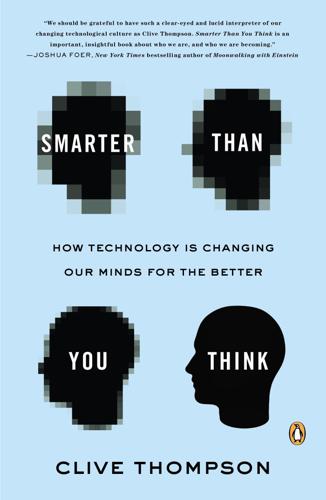
Smarter Than You Think: How Technology Is Changing Our Minds for the Better
by
Clive Thompson
Published 11 Sep 2013
Most often they’d start off frantically building armies, hoping to defend themselves against invasions. But the invading armies were always stronger, because those countries hadn’t focused solely on militarization—they’d also cultivated agriculture and technology and infrastructure. The students began realizing that a country needs to thrive on many fronts; you needed guns and butter. So they demanded education. They’d pester Squire with questions about history and economics and geography. One girl, Andrea, began reading encyclopedia entries and interrogating Squire about naval warfare, to try to devise a strategy that would beat her dreaded Roman neighbors. Chris, a boy struggling to play as the Iroquois, realized he needed to know more about agricultural development, so he, too, began pestering Squire for lectures (“and he wanted details,” Squire marveled).

New Laws of Robotics: Defending Human Expertise in the Age of AI
by
Frank Pasquale
Published 14 May 2020
There is a delicate balance between gradually reducing destructive capacity generally and ensuring that security alliances have enough firepower to deter aggression from greater powers and terrorism from non-state actors. Some states may well need to invest more in defense (including leading AI technology). But the greater a state’s spending on weaponry currently is, the more its citizens should beware its contributing to the garrison state and arms race dynamics critiqued above. There is a classic “guns and butter” trade-off posed by conventional public finance experts. Demands for more spending on human services are a drain on war-fighting posture. But such domestic spending may in fact save regimes from themselves by reducing the resources available to feed arms races and self-defeating shows of force.
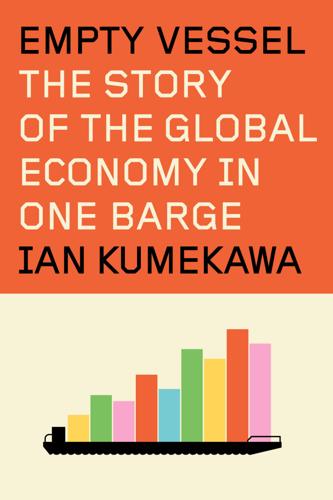
Empty Vessel: The Story of the Global Economy in One Barge
by
Ian Kumekawa
Published 6 May 2025
The legislation, which inspired similar laws in other states, set the stage for an escalating regime of broken-windows policing, arrests, and imprisonment.[11] These trends intensified under the Reagan administration’s war on drugs, itself pitched as a moral battle for American values, fought on the streets of American cities with surplus military equipment. As the global economy slowed after the thirty-year postwar boom and old industries like ship handling fell away, guns replaced butter. When Reagan slashed social welfare programs in the name of individual responsibility and small government, he oversaw a major expansion of federal funding for law enforcement. The result was a rapid rise in mass incarceration. America’s prison population grew fivefold between 1965 and 1988.
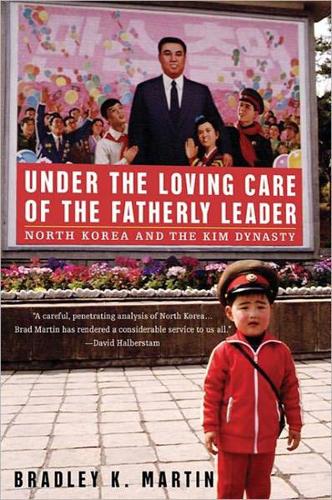
Under the Loving Care of the Fatherly Leader: North Korea and the Kim Dynasty
by
Bradley K. Martin
Published 14 Oct 2004
His continuing policy of placing heavy emphasis on military readiness led to a high-stakes war of nerves with Washington, Tokyo and Seoul. That struggle put at risk any gains the North Korean people might hope to derive from his other initiatives. The official position, expressed at the beginning of 2000 by an economics professor at Kim Il-sung University, was that Kim Jong-il’s emphasis on “military-first” politics meant guns and butter. Yes, it was intended to “defend the nation from the invasion of hostile forces.” But it was “a comprehensive plan which includes an effective means for an economic buildup.” The policy had “nothing to do with military rule or a military regime.” And the “powerful state” that the Dear Leader wanted to create did not mean a country pursuing hegemony.
…
The True Meaning of the Military First Policy,” The DPRK Briefing Book, Nautilus Institute, December 11, 2003, http://www.nautilus.org/DPRKBriefingBook/ transition/Ruediger_Socialism.html. For a contrary view describing the military-first policy as a barrier to economic recovery, see Aidan Foster-Carter’s “North Korea: Guns or Butter?” posted April 6, 2004, Northwest Asia Peace and Security Network, http://www.nautilus.org/fora/security/0418_FosterCarter. html. 25. George Wehrfritz, with B. J. Lee and Hideko Takayama, “The First Signs of Life: Will economic reforms in the Hermit Kingdom save Kim Jong Il’s regime or hasten the fall?”
…
Joseph, 74 migration to North Korea, 91 to South Korea, 57, 90 ideological conformity resulting, 91 labor shortage and, 158 militarism in children’s play, 689 costs to economic development, living standards, 124, 133, 396, 449, 505 defensive, offensive motivations, 124, 126–127 domestic opposition to, 243 Kim Il-sung renunciation of, just before death, 506 1960s beginning, 121 1970s, 133 military budget, 99, 368, 455–456 military dictatorship, under Kim Jong-il, 485 “military-first” ideology, 516 Communist Manifesto jettisoned in, 665–666 offering guns and butter, 656 military-industrial complex North Korean, 666 U.S., 84 militia, 99 minerals, 51, 58, 63–64, 124, 176, 366. See also energy; gold; uranium mines and mine workers, 303, 388, 412, 429, 503, 505, 559, 561, 563, 567, 569 assignment of discharged infantrymen, 527, 530 as source of armed uprising, 527 missiles, North Korean, 635–637 comprehensive agreement, 658–659 opposed by U.S. advocates of Star Wars, 659 exports for foreign currency, 658 long-range, 635, 639 as negotiating card, 636 nuclear-capable, 445–446, 495 model workers.

Red Moon Rising
by
Matthew Brzezinski
Published 2 Jan 2007
“We ourselves have made it an article of faith that the nation which builds the biggest bombs must be morally superior because it is materially superior,” she declared. “We need not be surprised today that Russia is making the same claim.” And yet, she continued, “we go on believing that our system can provide guns and butter. Yes, and Bibles too. But we query whether that means atom bombs and bombes glacees; SAC by General LeMay, and sack dresses by Christian Dior; lower taxes and higher rockets—all this and heaven too.” The Eisenhower administration could not easily brush off the second, more introspective, wave of unease brought on by another Soviet triumph.

Merchants' War
by
Stross, Charles
Published 30 Sep 2007
Given a choice between a rock and a hard place-between the need to mobilize the cumbersome and expensive apparatus of continental defense in the face of French aggression, and the demands of an exhausted Treasury and the worries of bondholders-the king had gone for neither, but had instead dismissed the quarrelsome political mosquitoes who kept insisting that he make a choice between guns and butter. It would have struck Erasmus as funny if he wasn't fully aware that it meant thousands were going to starve to death in the streets come winter, in Boston alone-and that was ignoring the thousands who would die at sea and on foreign soil, because of the thrice-damned stupid assassination of the young prince.
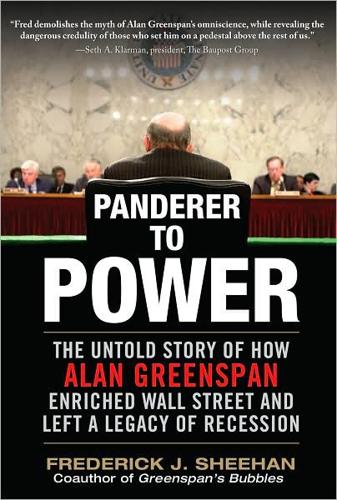
Panderer to Power
by
Frederick Sheehan
Published 21 Oct 2009
But now, in addition to gold, credit extended by the Federal Reserve banks (“paper reserves”) could serve as legal tender to pay depositors.40 The succinctness of “Gold and Economic Freedom” is quite a contrast to the labored, meandering speeches that he would make as Fed chairman. Greenspan’s Warning about the Guns and Butter Deficit The Dow Jones Industrial Average had been rising for 18 years, but it reached its peak in 1966. Greenspan coauthored a front-cover story in the January 1966 issue of Fortune in which he projected much higher costs than the government foretold. This article was timely, accurate, and probably not welcomed by the administration, since President Johnson and Secretary of Defense Robert McNamara were furtively spending well over budget.41 In “Gold and Economic Freedom,” Greenspan had warned that the “gold standard is incompatible with chronic deficit spending (the hallmark of the welfare state).”
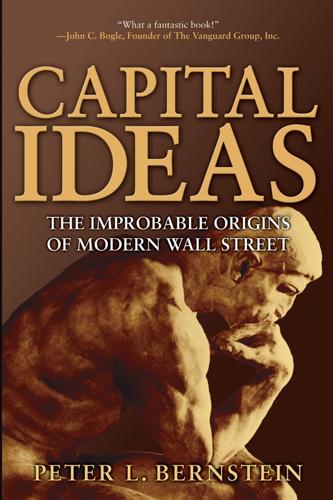
Capital Ideas: The Improbable Origins of Modern Wall Street
by
Peter L. Bernstein
Published 19 Jun 2005
As a student, he had been wrestling with a broader and more abstract problem: how people can make the best possible decisions in dealing with the inescapable trade-offs in life. Economists insist that you can’t have your cake and eat it too. If we want more of something, we have to give up something else—guns for butter, saving for consumption, employment for leisure. Investors face an especially cruel trade-off, and that was what attracted Markowitz. Nobody gets rich squirreling money away in a savings account. So investors cannot hope to earn high returns unless they are willing to accept the risk involved, and risk means facing the possibility of losing rather than winning.
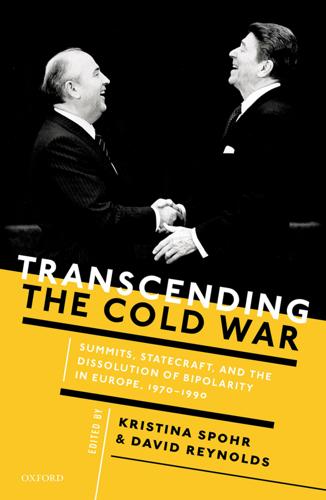
Transcending the Cold War: Summits, Statecraft, and the Dissolution of Bipolarity in Europe, 1970–1990
by
Kristina Spohr
and
David Reynolds
Published 24 Aug 2016
‘We have spent all that money and have all that equipment’, he told an aide, ‘and there is nothing we can do to prevent a nuclear missile from hitting us’.9 Yet Reagan also felt that the nuclear arms race would serve as an ideological litmus test, proving the superiority of capitalism over communism in providing both guns and butter. He accordingly pursued contradictory aims as president, hoping to eliminate nuclear weapons entirely, while using massive military spending to apply pressure on the Soviets. His ends were peaceful but the means he used were often confrontational. And he failed to rein in the internecine feuding amongst his advisers—Reagan had no less than six national security advisers during his eight years in office—which only added to the confused and discordant messages emanating from Washington.

Uncanny Valley: A Memoir
by
Anna Wiener
Published 14 Jan 2020
They wanted to see automation and artificial intelligence jump-start a renaissance: the machines would do the work so the rest of us, rendered useless, could focus on our art. The VCs wanted, one might deduce, to block-grant government services—or, should AI inspire revolution, a rationale for owning bunkers in New Zealand stocked with guns and peanut butter. I’d believe in an AI renaissance as soon as venture capitalists started enrolling in pottery classes; as soon as they were automated out of a job. The VCs were prolific. They talked like nobody I knew. Sometimes they talked their own book, but most days, they talked Ideas: how to foment enlightenment, how to apply microeconomic theories to complex social problems.
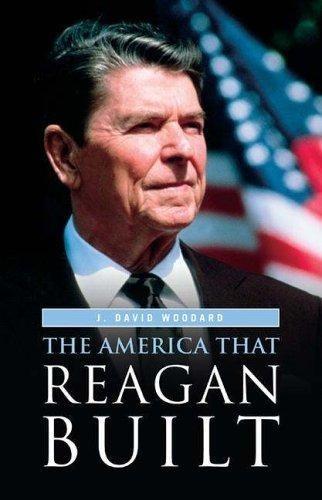
The America That Reagan Built
by
J. David Woodard
Published 15 Mar 2006
‘‘He particularly enjoyed information about the economic troubles they [the Soviets] were experiencing,’’ recalled David Wigg, the CIA liaison to the White House.66 The president’s plan was to expand the American economy, then increase American military spending and squeeze the Kremlin. He believed Moscow could not grow its military budgets because its consumer economy was already on a starvation diet. The Russians could afford neither guns nor butter. Reagan reasoned that if the United States went forward with an arms race buildup, then the communist system would collapse. In short, the defense buildup was as much about economic warfare against the Soviets as it was about restoring American military power. The ‘‘evil empire’’ speech captured Reagan’s views, and he used it in numerous speeches and conversations.
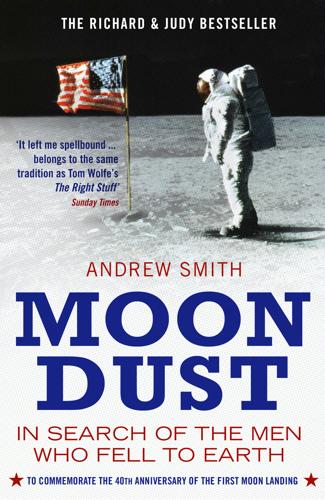
Moondust: In Search of the Men Who Fell to Earth
by
Andrew Smith
Published 3 Apr 2006
Shelton, Connecticut: The Greenwich Workshop Inc., 1998. Benjamin, Marina. Rocket Dreams: How the Space Age Shaped Our Vision of a World Beyond . London: Chatto & Windus, 2003. Bennett, Mary, & David S. Percy. Dark Moon: Apollo and the Whistle Blowers . London: Aulis Publishers, 1999. Bernstein, Irving. Guns or Butter: The Presidency of Lyndon Johnson . Oxford: Oxford University Press, 1996. Bizony, Piers. 2001: Filming the Future . London: Aurum Press, 1994. Bockris, Victor. Warhol . London: Penguin, 1990. Booker, Christopher. The Seventies . New York: Penguin Books, 1980. Brokaw, Tom. The Greatest Generation .
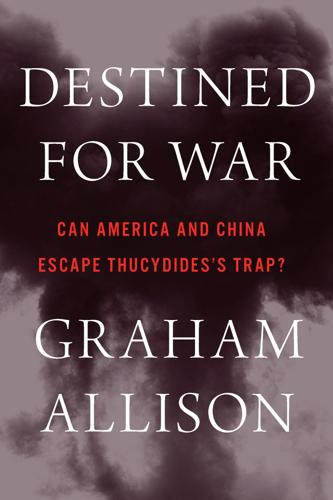
Destined for War: America, China, and Thucydides's Trap
by
Graham Allison
Published 29 May 2017
In time, the US approach—a strategy of containment sustained over four decades—succeeded. The contrast between the success of free-market democracies and the internal contradictions of command-and-control authoritarianism hollowed out the Soviet regime over several decades. Unable to provide both guns and butter, the Soviet Union collapsed in 1991, and the defining conflict of the late twentieth century ended without bloodshed. 16. UNITED KINGDOM AND FRANCE VS. GERMANY Period: 1990s–present Ruling powers: United Kingdom and France Rising power: Germany Domain: Political influence in Europe Outcome: No war At the conclusion of the Cold War, many expected that a newly reunified Germany would regress to its old hegemonic ambitions.
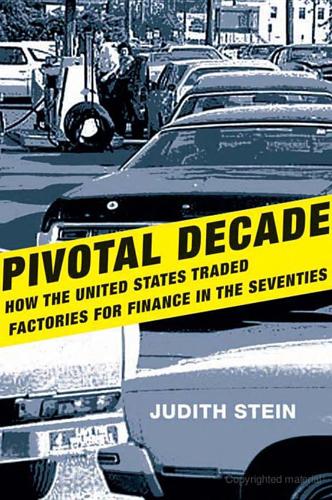
Pivotal Decade: How the United States Traded Factories for Finance in the Seventies
by
Judith Stein
Published 30 Apr 2010
Brands, Wages of Globalism: Lyndon Johnson and the Limits of Power (New York: Oxford University Press, 1995), 249. 69. Sandbrook, Eugene McCarthy, 184. 70. Ibid., 200. 71. Cited in ibid., 208. 72. Ibid., 198–200. 73. Nelson W. Polsby, Consequences of Party Reform (New York: Oxford University Press, 1983). 74. Sandbrook, Eugene McCarthy, 201. 75. Irving Bernstein, Guns or Butter: The Presidency of Lyndon Johnson, (New York: Oxford University Press, 1996), 516–21; Doris Kearns Goodwin, Lyndon Johnson and the American Dream (New York: Harper and Row, 1976), 351–52. CHAPTER 2. 1971 1. Richard M. Scammon and Ben J. Wattenberg, The Real Majority (New York: Coward, McCann and Geoghegan, 1970). 2.
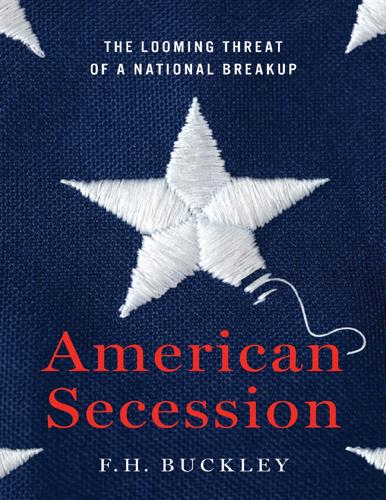
American Secession: The Looming Threat of a National Breakup
by
F. H. Buckley
Published 14 Jan 2020
They did one thing very well, and economies of scale allowed them to do it very profitably. But is that what a modern state is like? Large countries in the modern era are more like the conglomerates that were created in the go-go years of the 1960s, when companies grew by mergers and acquisitions with firms in unrelated industries. All of a sudden, Guns Inc. started producing butter, and War Ltd. began to manufacture ploughshares. It’s what Michael Corleone wanted to do in The Godfather, when he thought he could leave the rackets for a legitimate business in Las Vegas. It was called conglomerization, and it sacrificed the economies of scale associated with sticking to one product.
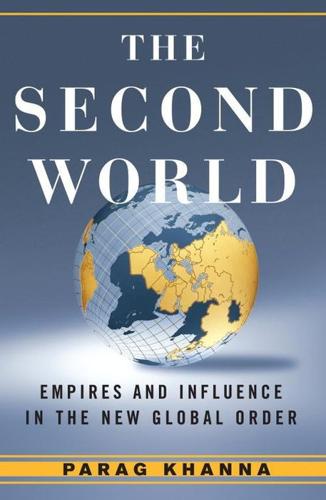
Second World: Empires and Influence in the New Global Order
by
Parag Khanna
Published 4 Mar 2008
Think tanks once provided policy research to the Kremlin’s apparatchiks, but as a Moscow political analyst lamented in his shabby office, “These days our mundane work couldn’t matter less.” Russia has become the archetypal petrocracy, with profligate spending, skewed development, and elite struggles over control of vast natural resources while the nontaxpaying public’s demands go unnoticed.6 Oil revenues have not led Russia to splurge on either guns or butter, however. Its military equipment remains outdated, with disorganized command and control, while it struggles with manpower as the national population collapses at the staggering rate of half a million per year. Two-thirds of Russians across the vast nation still live near the poverty line, dying off in waves during each successive intolerably cold winter.

Turning the Tide
by
Noam Chomsky
Published 14 Sep 2015
Our own recent history shows that, and we need not pretend to ourselves that we do not know the way. The mass popular movement against the war in Indochina undoubtedly had significant effects. It raised the costs to the war criminals who conducted it. It prevented the state from declaring a true national mobilization, so that the war had to be fought on deficit financing, with guns and butter, leading to serious economic problems that finally impelled elite groups to turn against it as an investment that should be liquidated. Anti-war sentiment at home fueled dissidence within the military, which began to collapse, much to its credit. US elite groups learned a lesson familiar to their imperial predecessors: a citizen’s army is unable to fight a war against a civilian population.

More: The 10,000-Year Rise of the World Economy
by
Philip Coggan
Published 6 Feb 2020
But profits rose, as the economy recovered and foreign competition was restricted. German imports in 1938 were 59% below their pre-Depression level. 87 While the Germans had jobs, their real wages in 1938 were lower than they were when the Nazis took power, and they were consuming less milk, eggs and meat than they did before the Depression.88 This was guns not butter, as both Goebbels and Göring accepted. Furthermore, the thuggishness of the regime was very quickly apparent. A boycott of Jewish businesses was announced on April 1st 1933; Jews who tried to flee the country in response to Hitler’s threats were subject to a heavy tax. In 1934, the left-wing elements of the Nazi party were purged in the “Night of the Long Knives”, when hundreds were murdered.

Capitalism in America: A History
by
Adrian Wooldridge
and
Alan Greenspan
Published 15 Oct 2018
By the middle of the 1990s, the average hourly real wage of a production worker was less than 85 percent of what it had been in 1973. FROM HUBRIS TO NEMESIS One reason for the miserabilism of the 1970s was the excessive optimism of the previous decade: triumphant liberals had pushed the postwar economic model to a breaking point. Politicians made promises (“guns and butter”) that were too good to last. Workers demanded higher wages without delivering higher productivity. Managers focused on fighting yesterday’s battles rather than winning tomorrow’s wars. The key figure in the transition from the age of gold to the age of lead was Lyndon Baines Johnson. John F.

The Rise and Fall of the Neoliberal Order: America and the World in the Free Market Era
by
Gary Gerstle
Published 14 Oct 2022
It also made a small New Left into a mass movement with hundreds of thousands of members and followers. Within three short years, the war and the protests it sparked had destroyed Johnson’s career, impelling him to announce in spring 1968 that he would not even seek re-election. Having to service demands for both guns and butter, the US economy began to overheat; inflation ensued. Many Great Society initiatives were rolled back or abandoned. Meanwhile, the racial reforms that Johnson had secured in 1964 and 1965 had sparked as much racial conflict as harmony, inclining some blacks toward urban insurrections and causing many whites, fearing for their safety, to flee the Democratic Party and embrace Republicans, now offering themselves as the protectors of law and order and, in the South, of white supremacy.12 If racial remediation and a war gone wrong had been the only forces at work, the Democrats might have recovered and sustained their New Deal order.
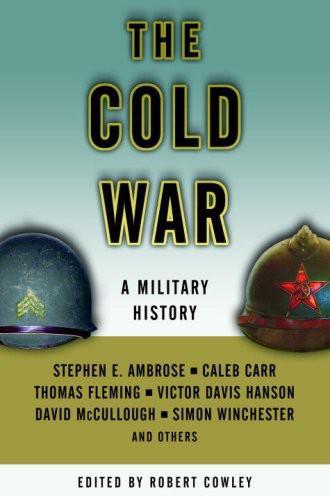
The Cold War
by
Robert Cowley
Published 5 May 1992
Because there could be no genuine coexistence between the two worldviews—though the sides intermittently paid lip service to the notion— both East and West aimed for total victory. A middle ground was out of the question. For most of those years, the West held a decided edge in wealth and technological sophistication. It managed the feat of producing guns and butter at the same time. The Communist empire couldn't, and didn't, and that may have been its signal weakness and eventual undoing. Is there a person over the age of thirty whom the Cold War didn't somehow affect? For those of us who are as old as I am (seventy), it occupied most of our adult lives.
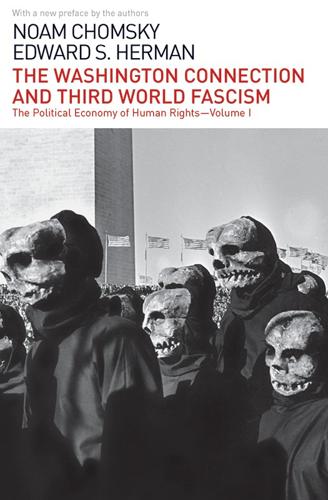
The Washington Connection and Third World Fascism
by
Noam Chomsky
Published 24 Oct 2014
(A Latin American Church group)180 “The dominant presence of this inevitable parameter—National Security—imposes the tremendous burden of an economy which is viscerally destructive to the normal expectations of development and welfare which move all peoples...Hence a new dilemma—Welfare or Security—previously pointed out by Goering in less just but highly suggestive terms: ‘more guns, less butter.’ In fact, there is no getting around the necessity of sacrificing Welfare to the benefit of Security when the latter is actually endangered. Those people who refuse to admit this have learned in the dust of defeat a well-deserved lesson.” (A Brazilian General)181 4.5.1 The Nazi Parallel: The National Security State and the Churches The two statements quoted above bring out some central features of modern Latin America.
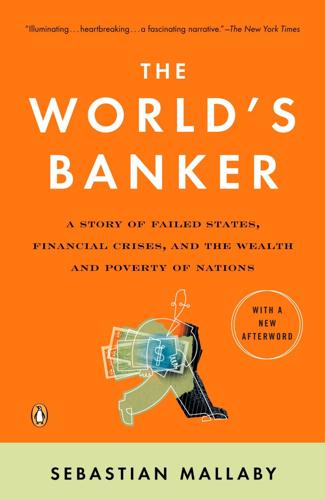
The World's Banker: A Story of Failed States, Financial Crises, and the Wealth and Poverty of Nations
by
Sebastian Mallaby
Published 24 Apr 2006
“A Search for Global Relevance: Patti Waldmeir on Wolfensohn’s First Year at the World Bank,” by Patti Waldmeir, Financial Times, May 30, 1996, p. 16. 2. Bankers with a Mission, by Jochen Kraske et al. (New York: Oxford University Press, 1998), pp. 213–15. 3. Ibid., p. 251. 4. Ibid., p. 248. 5. Ibid. 6. “The Canny Nomination of Barbara Who,” The Economist, March 22, 1986. 7. Hobart Rowen, Self-Inflicted Wounds, from LBJ’s Guns and Butter to Reagan’s Voodoo Economics (New York: Times Books, 1994), p. 300. Cited in The World Bank: Its First Half Century, by Devesh Kapur, John Lewis, and Richard Webb (Washington, D.C.: Brookings Institution, 1997), p. 338. 8. In Latin America the infant mortality rate fell from 61 per 1,000 live births in 1980 to 41 in 1990.
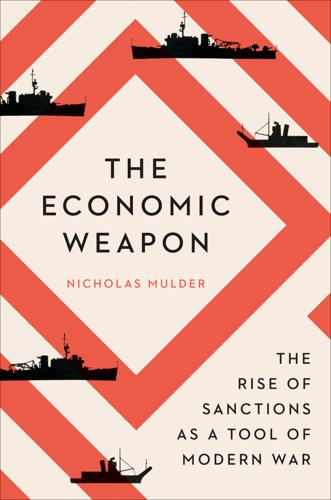
The Economic Weapon
by
Nicholas Mulder
Published 15 Mar 2021
Its aims had been announced in the Atlantic Charter.133 Point four of that declaration promised all nations “access, on equal terms, to the trade and to the raw materials of the world which are needed for their economic prosperity.” At this time the United States had already committed Lend-Lease funds to over thirty nations. These supplies were the bread, guns, and butter of the UN alliance. By the summer of 1945, when the program ended, Washington had provided over $48 billion in such supplies and received $8 billion through so-called Reverse Lend-Lease.134 But Roosevelt also launched new government agencies to direct economic pressure on the enemy, such as the Board of Economic Warfare created in December 1941.135 Consisting of three branches—imports, exports, and analysis—its institutional simplicity was a testament to Washington’s commanding material position.
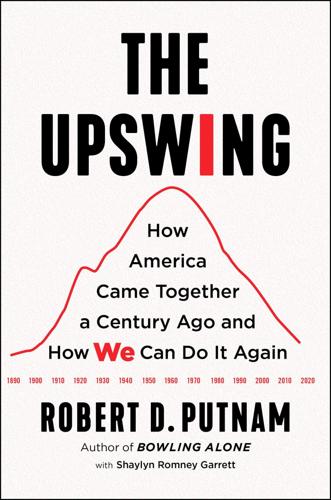
The Upswing: How America Came Together a Century Ago and How We Can Do It Again
by
Robert D. Putnam
Published 12 Oct 2020
As a calamitous bookend to a heart-wrenching decade, Watergate left America stunned, and struck deep at our faith in honorable leadership.59 As the Sixties ended, so, too, it seemed, did America’s promise of prosperity. Given rising public discontent, especially over the Vietnam War, both Johnson and Nixon decided neither to raise taxes nor to choose between guns and butter. That fainthearted policy led to a combination of high inflation and high unemployment that had until then seemed virtually impossible economically, so a new term and a new measure had to be invented. The term was “stagflation,” and the measure was called the “misery index.” Stagflation was compounded by the oil embargoes and resultant gas lines of the 1970s.
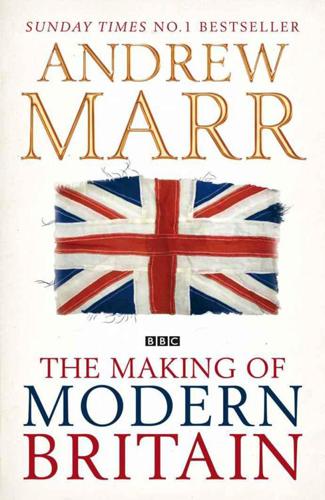
The Making of Modern Britain
by
Andrew Marr
Published 16 May 2007
While there is some truth in this, learned the hard way in more recent times, it discarded the basic principle of the German state-welfare scheme in favour of ‘the most trivial level of borrowing of individual devices’.37 But where would the money come from? Recession and unemployment stalked industrial Britain. Out in the streets, patriotic crowds were chanting for the latest hugely expensive war machines, the British Dreadnought battleships: ‘We want eight and we won’t wait.’ Guns or butter? Welfare or warfare? This was what really set the radical Liberal leaders on their collision course with the old establishment. Lloyd George needed to find, he calculated, £8 million for the Dreadnoughts, and another £8 million ‘to save 700,000 people from the horror of the workhouse and £2 million for 200,000 aged paupers’.

The Zionist Ideas: Visions for the Jewish Homeland—Then, Now, Tomorrow
by
Gil Troy
Published 14 Apr 2018
They just go to pubs and eat pasta. The debate over the normaliut supposedly ushered in by Oslo underscores what has become evident to Israelis of all persuasions in recent months: That Oslo was not, like the peace agreements with Egypt and Jordan, a strictly political achievement whose desirability can be judged in terms of guns and butter. For “the handshake,” as the deal with Arafat is known, sought to achieve the heart’s desire of “normal” Israelis by renouncing precisely those emotional assets which allow “Jewish” Israelis to lead meaningful lives. . . . Zionism is Jewish nationalism—the belief that there should be a Jewish nation-state in the Land of Israel. . . .
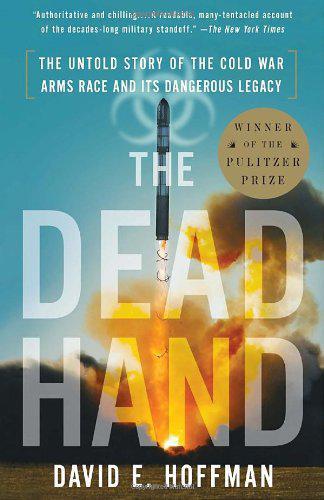
The Dead Hand: The Untold Story of the Cold War Arms Race and Its Dangerous Legacy
by
David Hoffman
Published 1 Jan 2009
Aspin earned a reputation when he first came to Congress as a publicity hound and a maverick who delighted in exposing wasteful Pentagon spending. In later years, he moved to the center, and, like Nunn, became an influential voice on military and defense issues. Right after the coup, on August 28, Aspin proposed a dramatic shift of guns to butter: take $1 billion from the $290 billion Pentagon budget and spend it on humanitarian assistance for the Soviet people. Two weeks later, on September 12, Aspin issued a white paper, "A New Kind of Threat: Nuclear Weapons in an Uncertain Soviet Union." The United States should make sure that "the first winter of freedom after 70 years of communism isn't a disaster," Aspin declared.

The Power Law: Venture Capital and the Making of the New Future
by
Sebastian Mallaby
Published 1 Feb 2022
If all went well—if Bushnell embraced his strategy, and if the plan attracted interest from other venture capitalists—then Valentine would invest. He would risk his money, in other words, only when Atari had been at least partially de-risked. Activism and gradualism would thus combine to make a hot tub culture backable. Valentine could afford to wade in gradually because of the market climate. The guns-and-butter expansion of the 1960s had given way to tougher times; defense cuts had eliminated thousands of jobs, and the Arab oil embargo of 1973 had entrenched a depressing mix of low growth and high inflation. The tally of initial public offerings plummeted from more than one thousand in 1969 to just fifteen in 1974, and the S&P 500 returned more or less nothing over this period.[26] The collapse all but wiped out the nascent hedge-fund business, and likewise a headline in Forbes wondered, “Has the bear market killed venture capital?”
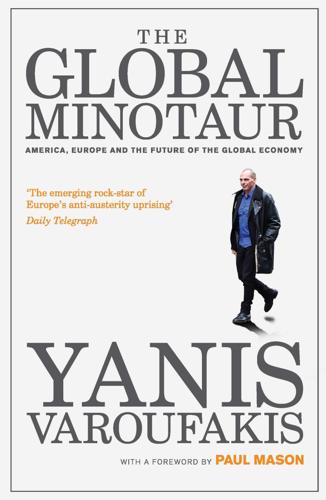
The Global Minotaur
by
Yanis Varoufakis
and
Paul Mason
Published 4 Jul 2015
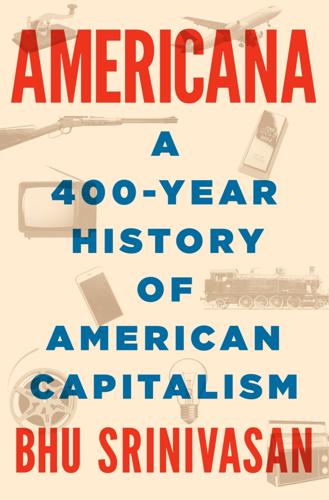
Americana: A 400-Year History of American Capitalism
by
Bhu Srinivasan
Published 25 Sep 2017
If anything, a sizable proportion of Americans sympathized with the Germans and felt that their own country had been duped into intervening in the Great War. Even if it had the political will, an impossible “if” at that, what could America do? In 1934 defense spending as a portion of federal expenditures dropped to its lowest level in decades. In the budgetary balance between guns and butter, the former was considered especially wasteful in peacetime. This made perfect sense considering that America’s two most formidable defensive assets didn’t cost anything to maintain. As long as the Atlantic and Pacific oceans remained vast and filled with water, America was going to be tough to invade.
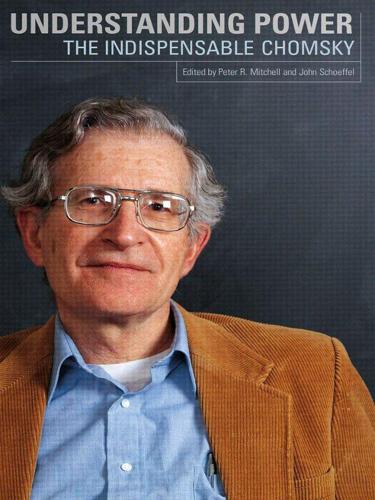
Understanding Power
by
Noam Chomsky
Published 26 Jul 2010
The peace movement made it impossible to declare a national mobilization around the war—there was just too much dissidence and disruption, they couldn’t do what was done during the Second World War, for example, when the whole population was mobilized around the war. See, if they could have gotten the population mobilized like that, then the Vietnam War would have been very good for the economy, like the Second World War was during the Forties, a real shot in the arm. But they couldn’t, they had to fight a deficit-spending war, what’s called a “guns-and-butter” war. And the result was that we got the beginnings of stagflation [inflation without a concurrent expansion of the economy], and weakening of the U.S. dollar, and our main economic competitors, Europe and Japan, began raking off huge profits as offshore producers for the war—in short, the war changed the economic balance of power between the U.S. and its major industrial rivals.

Americana
by
Bhu Srinivasan
If anything, a sizable proportion of Americans sympathized with the Germans and felt that their own country had been duped into intervening in the Great War. Even if it had the political will, an impossible “if” at that, what could America do? In 1934 defense spending as a portion of federal expenditures dropped to its lowest level in decades. In the budgetary balance between guns and butter, the former was considered especially wasteful in peacetime. This made perfect sense considering that America’s two most formidable defensive assets didn’t cost anything to maintain. As long as the Atlantic and Pacific oceans remained vast and filled with water, America was going to be tough to invade.
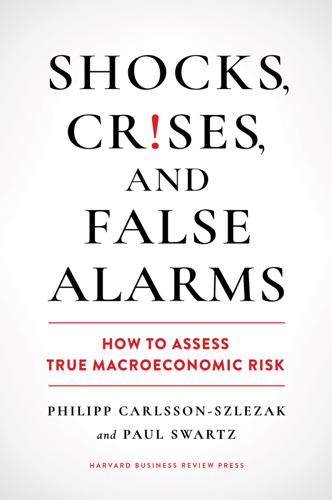
Shocks, Crises, and False Alarms: How to Assess True Macroeconomic Risk
by
Philipp Carlsson-Szlezak
and
Paul Swartz
Published 8 Jul 2024
This does not occur overnight.16 It is a process of years, not months or quarters, during which policy sticks to the wrong course. Recall that the 1970s inflation was not just a product of the oil spikes and the shock of Nixon taking the United States off the gold standard. That characterization is too simplistic. Its roots went back to a policy that wanted both guns (Vietnam War) and butter (Great Society social programs), and to a monetary policy that lacked the courage to fight inflation as it set in. As early as 1966, the Fed eased monetary policy even though inflation was uncomfortably high.17 What lies at the root of this sort of persistent error? In assessing structural risks, the deprioritization of price stability in favor of employment (or anything else) is the key to watch.
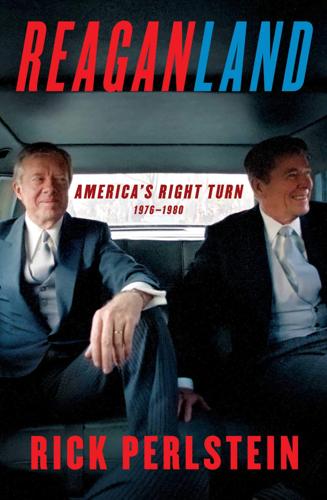
Reaganland: America's Right Turn 1976-1980
by
Rick Perlstein
Published 17 Aug 2020
President, I’ve just discovered that a meal and an opera ticket in New York is now up to $2,500. And I think this is one situation you ought to handle personally.” Perhaps Carter laughed to keep from crying. No one knew how to handle the “Great Inflation” of 1970. Even decades later, economists didn’t agree about what had caused it. Most believed it had something to do with “guns and butter”: Lyndon Johnson’s refusal to raise taxes to pay for the Vietnam War, while simultaneously increasing spending for his Great Society. Richard Nixon’s venality could have played a role: in August of 1971, facing a stubborn recession and an upcoming reelection fight, he ordered a radical package of economic reforms that included a ninety-day freeze on wages and prices—which he kept on extending for another three years, during which high prices gushed forth like water breaking through a failed dam.
…
Someone passed Brown a hand mic, which worked—but now, with him untethered from his mark behind the podium, the blue-screen process to project images behind him was thrown terribly out of whack, and Madison’s stately Capitol could be seen through electronic gashes carved into the side of his head, which changed shape in the most fascinating way as the light hit at different angles. He launched into a halting, jerky, pedantic explanation of how he believed America had arrived at the plight it was in now (by borrowing from the future during the golden years with printing-press money to pay for both guns and butter); and then, as he was discussing the reasons for the collapse of the auto industry, the slide show began, images with no rhyme or reason at all (a gleaming white building, a junkyard, a freeway interchange, an astronaut turning somersaults in zero gravity…). He began offering his policy prescriptions: exempt personal savings from taxation, and also the first $5,000 in dividend income; tax incentives for “rebuilding what society really needs, and getting off this mounting debt”—or did he say death?
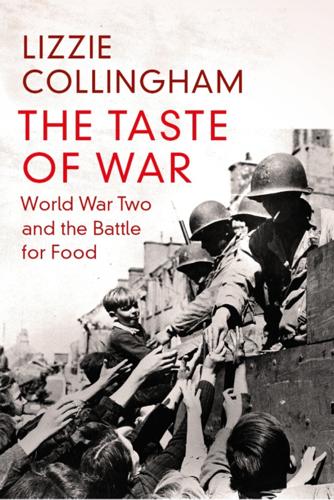
The Taste of War: World War Two and the Battle for Food
by
Lizzie Collingham
Published 1 Jan 2011
Hitler wanted to spend precious foreign exchange not on cattle and butter from Denmark but on iron from Sweden.26 The rise in the German GDP was not going to be channelled into improving the diet of the nation’s citizens, but into re-industrialization and rearmament. Göring was in earnest when he announced to the German population in Hamburg in December 1935 that the National Socialist leadership had chosen guns over butter.27 In order to achieve their aims the National Socialists would have to change the German nation’s eating habits and suppress demand for imported foods such as coffee and oranges, and all those foods dependent on imports of fodder for their production such as meat and butter. Despite the dictatorial nature of the regime the National Socialists proceeded with caution, unwilling to provoke food protests.28 The campaign for nutritional freedom was conducted through persistent persuasion and was given credibility by an array of scientists, nutritionists, doctors and social reformers, all of whom promoted the health benefits of the foods of autarky.
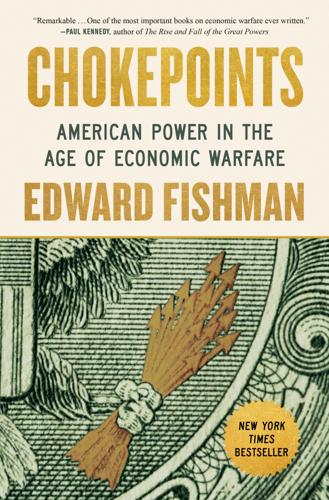
Chokepoints: American Power in the Age of Economic Warfare
by
Edward Fishman
Published 25 Feb 2025
GO TO NOTE REFERENCE IN TEXT Inflation soared to heights: Cecilia Rouse, Jeffery Zhang, and Ernie Tedeschi, “Historical Parallels to Today’s Inflationary Episode,” Council of Economic Advisers, White House, July 6, 2021, www.whitehouse.gov/cea/written-materials/2021/07/06/historical-parallels-to-todays-inflationary-episode; Phil Gramm and Mike Solon, “Lessons from the Great Inflation of 1973–81,” The Wall Street Journal, August 2, 2022, www.wsj.com/articles/lessons-from-the-great-inflation-of-1973-81-volcker-reagan-guns-and-butter-bracket-creep-tax-revenue-spending-monetary-policy-11659448515. GO TO NOTE REFERENCE IN TEXT declining as an energy superpower: Daniel Yergin, “The 1973 Energy Crisis: The Oil Embargo and the New Age of Energy” (speech, New York, October 11, 2023), School of International and Public Affairs, Columbia University, www.energypolicy.columbia.edu/events/the-1973-energy-crisis-the-oil-embargo-and-the-new-age-of-energy.

Behind the Berlin Wall: East Germany and the Frontiers of Power
by
Patrick Major
Published 5 Nov 2009
As one observer at the TRO works in Berlin commented: ‘For about the last eighteen months conversations with colleagues show that confidence in state, government and party is not consolidating but crumbling away more and more—especially since the contradiction between promises about the Economic Main Task and the actual situation has grown so great.’¹⁶⁷ Citizens drew increasingly political inferences. Overhasty collectivization was one of the common explanations for the food crisis, even when the real reasons were more complex and mundane.¹⁶⁸ Taboos were broken, for instance when Brandenburg housewives commented: ‘Is it back to that: guns instead of butter!’,¹⁶⁹ or ‘That’s the way Hitler began; first the butter, then the meat, then war.’¹⁷⁰ Rumours even spread that the chronic shortage of washing-powder was because its phosphorus ingredient was being used for munitions.¹⁷¹ The party was under attack over many of its core values. Rank-and-file SED members were reportedly going onto the defensive, being ‘driven into a corner’ or ‘wavering’.
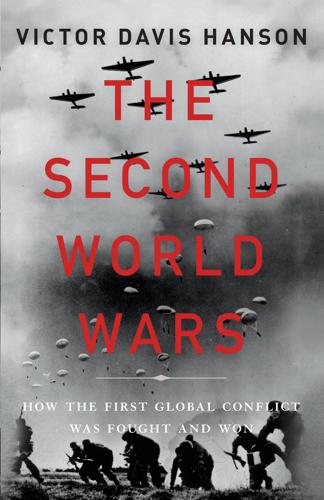
The Second World Wars: How the First Global Conflict Was Fought and Won
by
Victor Davis Hanson
Published 16 Oct 2017
The unprecedented expansion of the total US economy—it increased 55 percent between 1939 and 1944 as military expenditures went from 1.4 percent of GDP to 45 percent—was such that even civilian outlays in real terms were almost as large in 1944 as they were in 1939. Whereas all the other economies of the war saw budgeting as a rivalry between guns and butter, in the United States the economy grew so vast that there was room for both the largest military and civilian economies in the nation’s history. The Relative GDP of the Major Allied and Axis Powers, 1938–1945 Such American hyperefficiency was largely a result of bringing women and the unemployed into the workforce in record numbers, increasing work hours, improving techniques of mass production, building far larger and more modern factories, stepping up worker productivity, tapping into vast domestic supplies of cheap fossil fuels, and raising and freeing up untold amounts of capital.
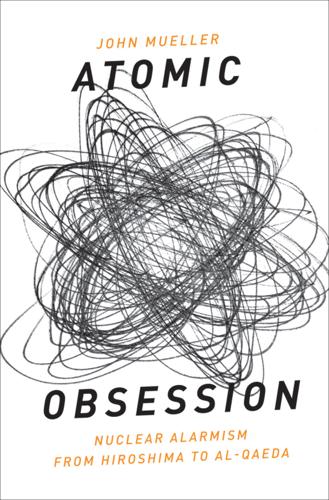
Atomic Obsession: Nuclear Alarmism From Hiroshima to Al-Qaeda
by
John Mueller
Published 1 Nov 2009
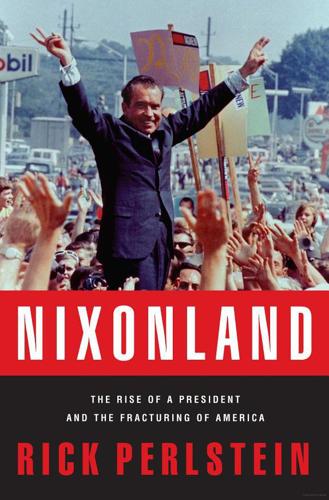
Nixonland: The Rise of a President and the Fracturing of America
by
Rick Perlstein
Published 1 Jan 2008
Since spring, his economists had been telling him that increased military spending, coming on top of record-breaking prosperity in the civilian economy, made an inflationary spiral almost a certainty unless he pushed through a quick tax hike. But to acknowledge he needed a tax hike was to acknowledge that the situation in Vietnam was an emergency. The notion that the nation could afford both Vietnam and the Great Society—“guns and butter”—was the central organizing principle of his presidency. Which is why Nixon hyped high prices as often as he did. He was planting a kind of rhetorical time bomb. He knew inflation would accelerate soon enough. In the middle of August the interest rates banks paid depositors were edging toward their legal limit, 5.5 percent; banks began curtailing loans.

Stigum's Money Market, 4E
by
Marcia Stigum
and
Anthony Crescenzi
Published 9 Feb 2007
FIGURE 7.17 Total bank liabilities vis-à-vis oil-exporting countries As an aside, it is interesting to consider that with countries in both Asia and the Middle East pegging their currencies to the dollar, the dollar’s reserve status is being fortified and therefore imparting a benefit on the U.S. economy. In turn, this helps the U.S. economy to grow strong enough for the United States to maintain both its military and economic hegemony, hence enabling the United States to have both guns and butter, as they say. Impact on Gold One likely destination for the current flow of petrodollars is the gold market. Russia is perhaps the best example of how surging oil revenues can affect other markets such as gold. In 2005, Russia said that it would like to at least double its gold reserves, a very believable assertion when one considers the fact that Russia’s holdings of gold reserves actually declined slightly since 1998 to $3.7 billion near the end of 2005.
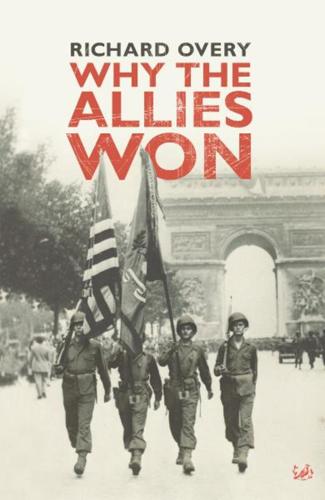
Why the Allies Won
by
Richard Overy
Published 29 Feb 2012
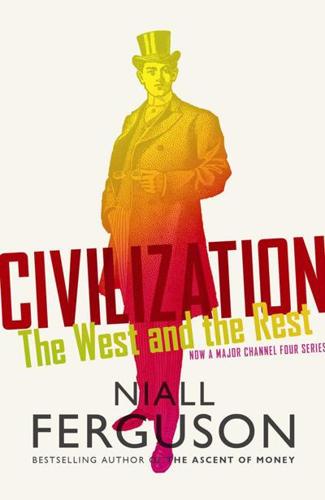
Civilization: The West and the Rest
by
Niall Ferguson
Published 28 Feb 2011
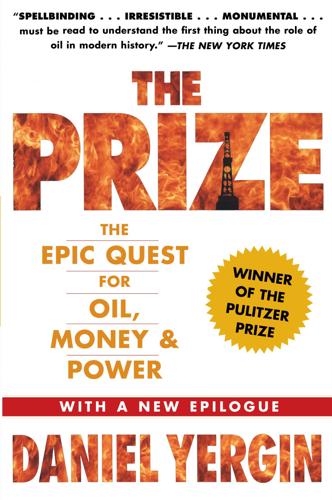
The Prize: The Epic Quest for Oil, Money & Power
by
Daniel Yergin
Published 23 Dec 2008
By 1904, the naval race was on in full—fueled on both sides by "a runaway technological revolution" in the size and speed of battleships, in the range of and accuracy of their firepower, and in the development of new weapons like the torpedo and submarine. In both countries, the race took place against a backdrop of social and labor unrest, of domestic conflicts, of financial and budgetary constraints. Britain underwent a classic guns-or-butter debate. The ruling Liberal party was torn between the "navalists," who supported a "big Navy" policy and an expanded Admiralty construction budget, and the "economists," who wanted to contain naval expenditures and instead put more money into the social and welfare programs they thought necessary to maintain domestic peace.